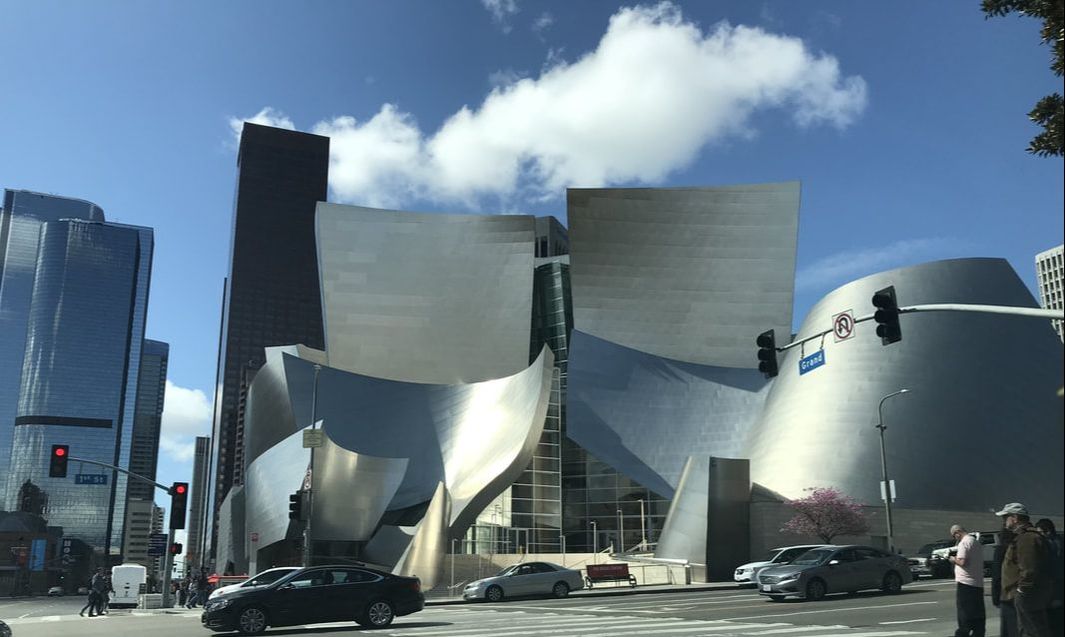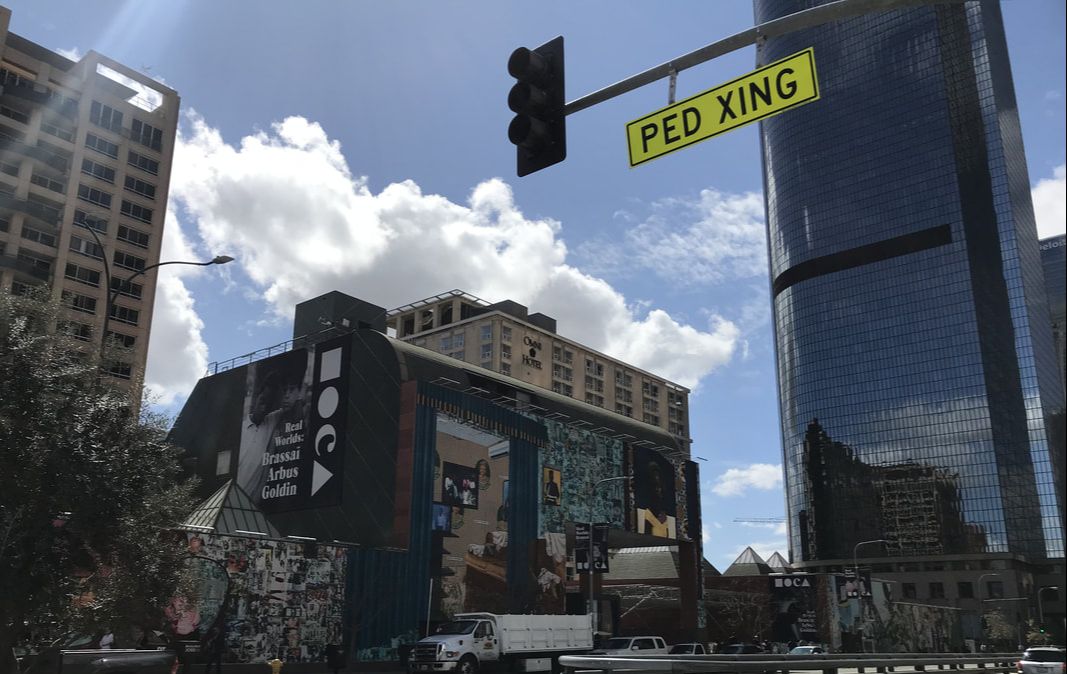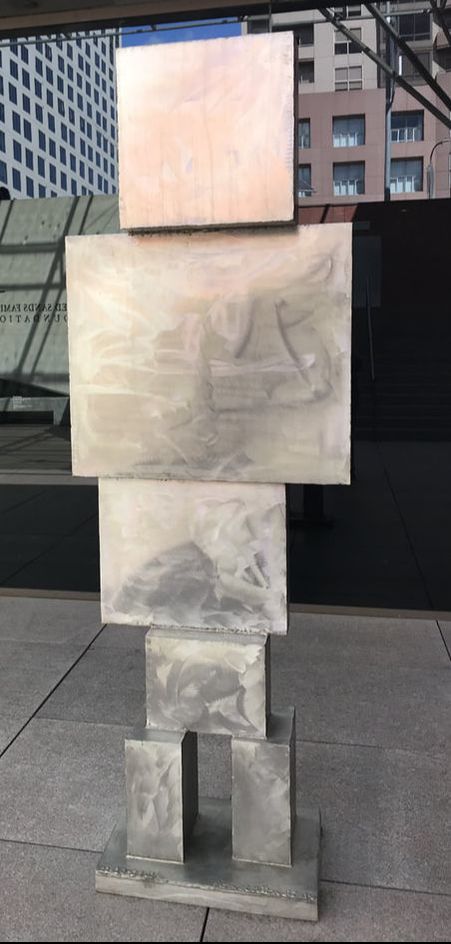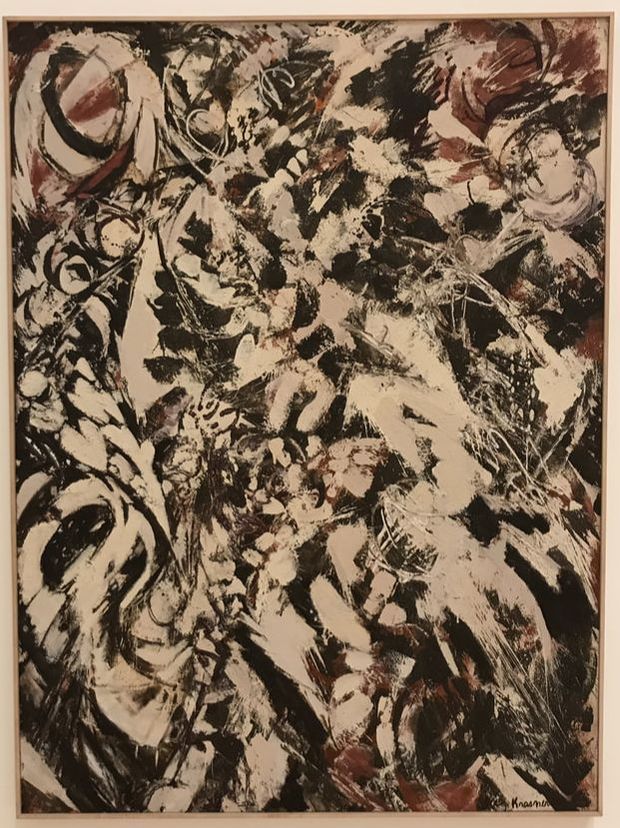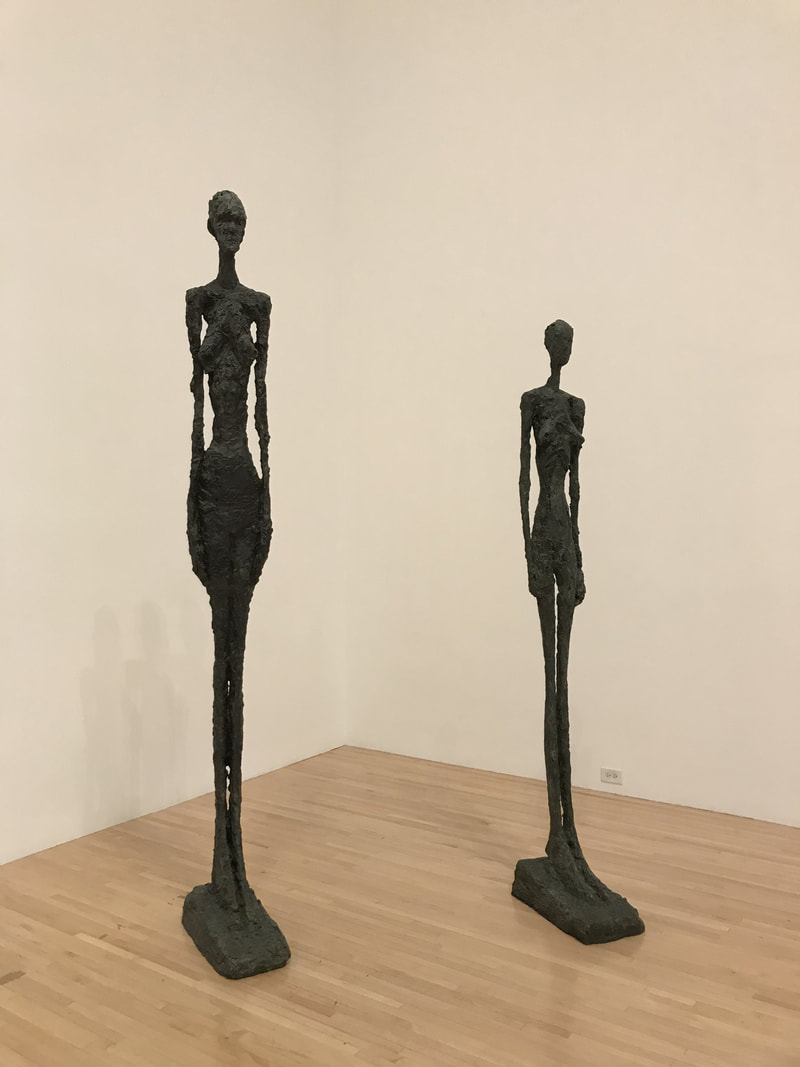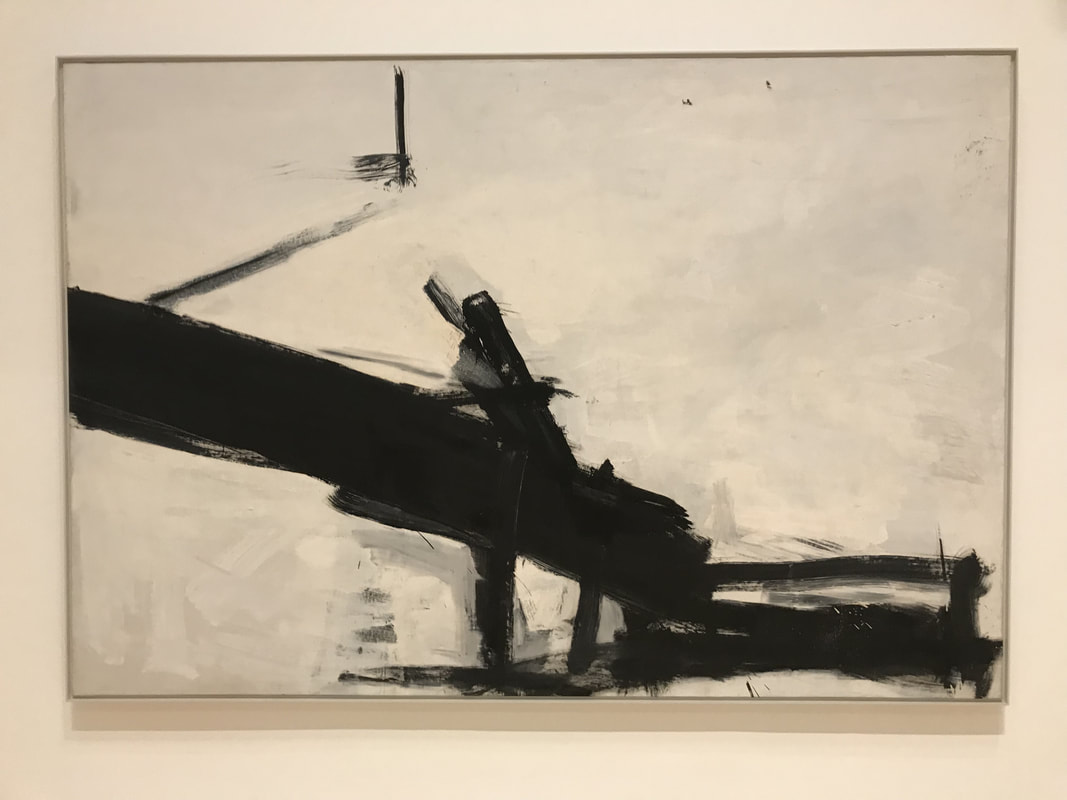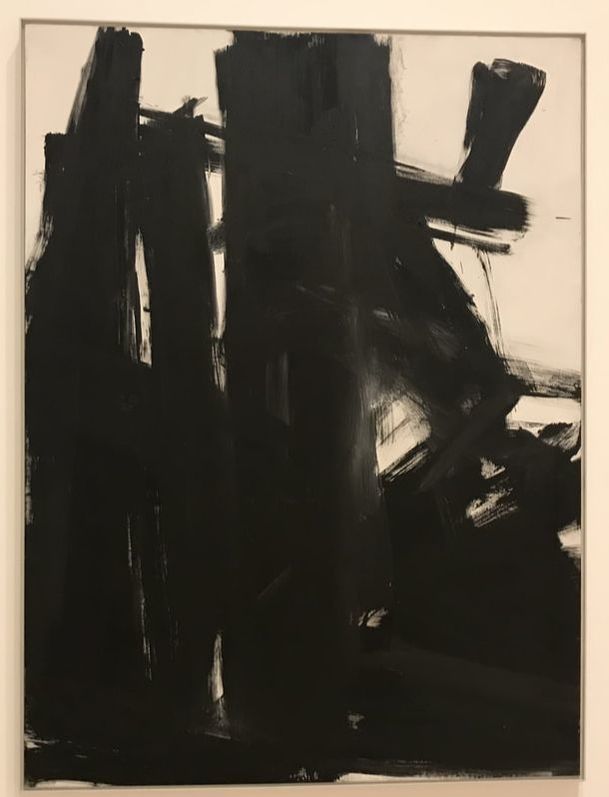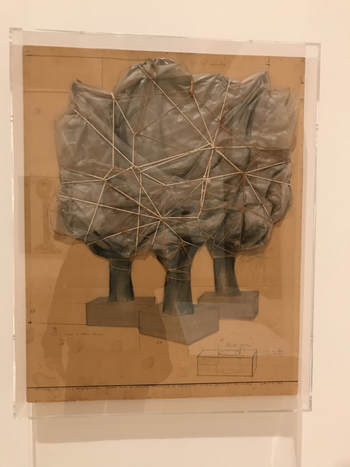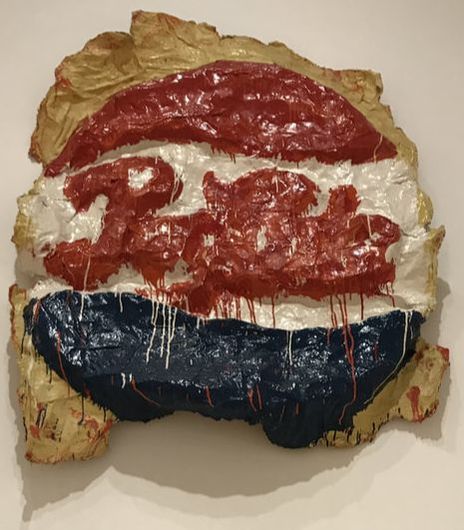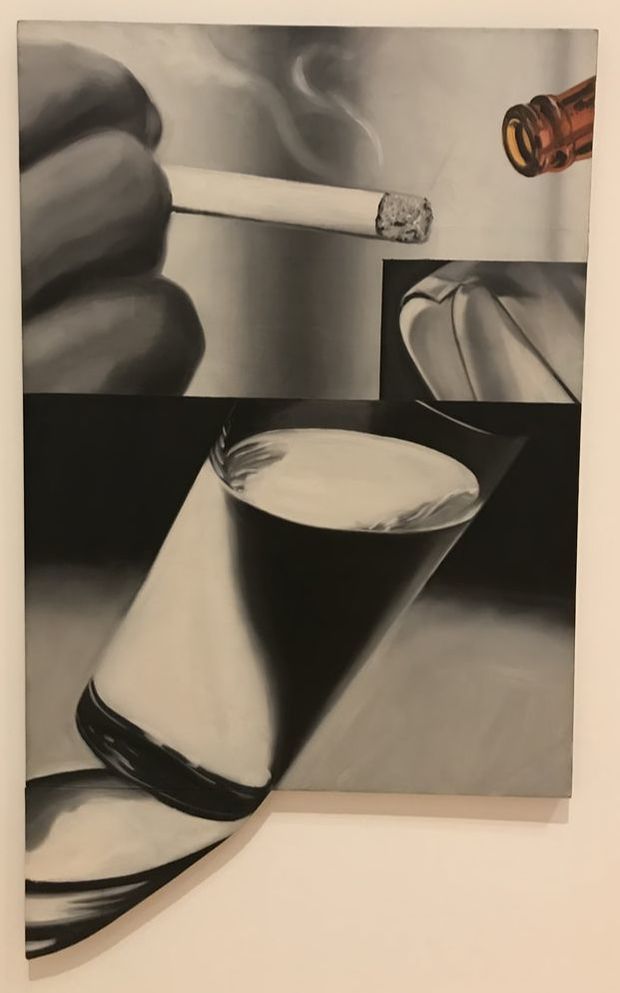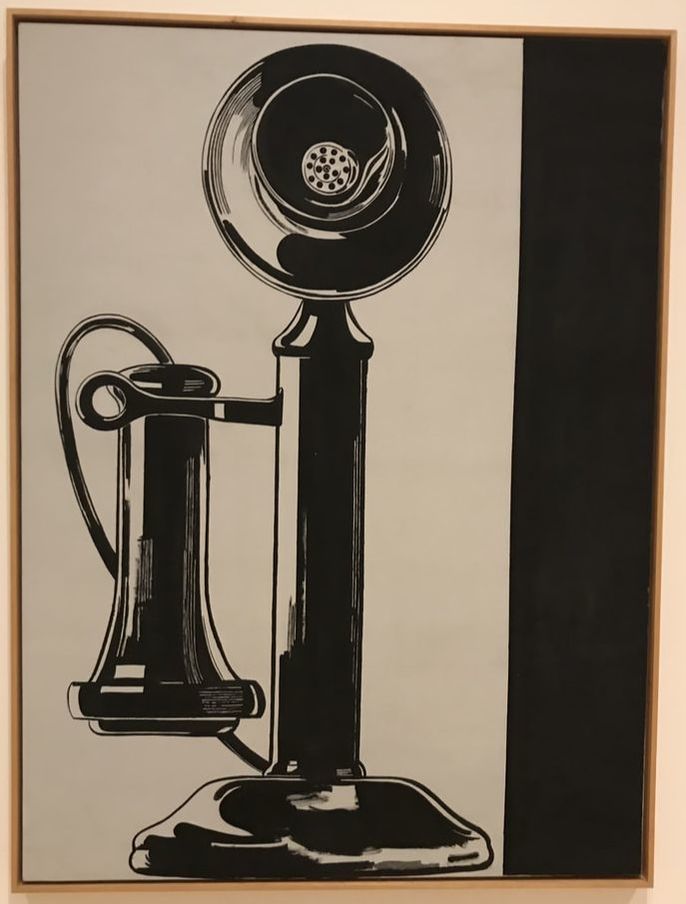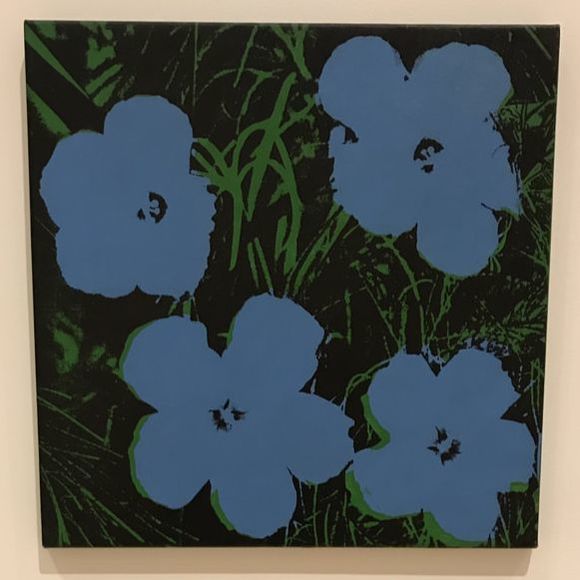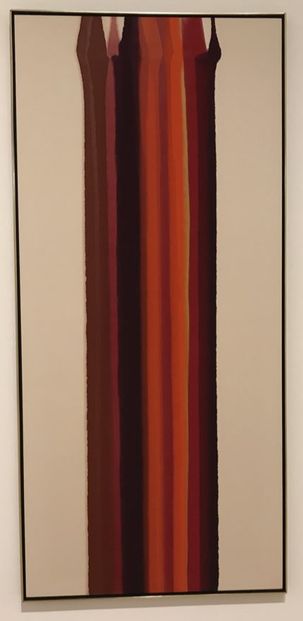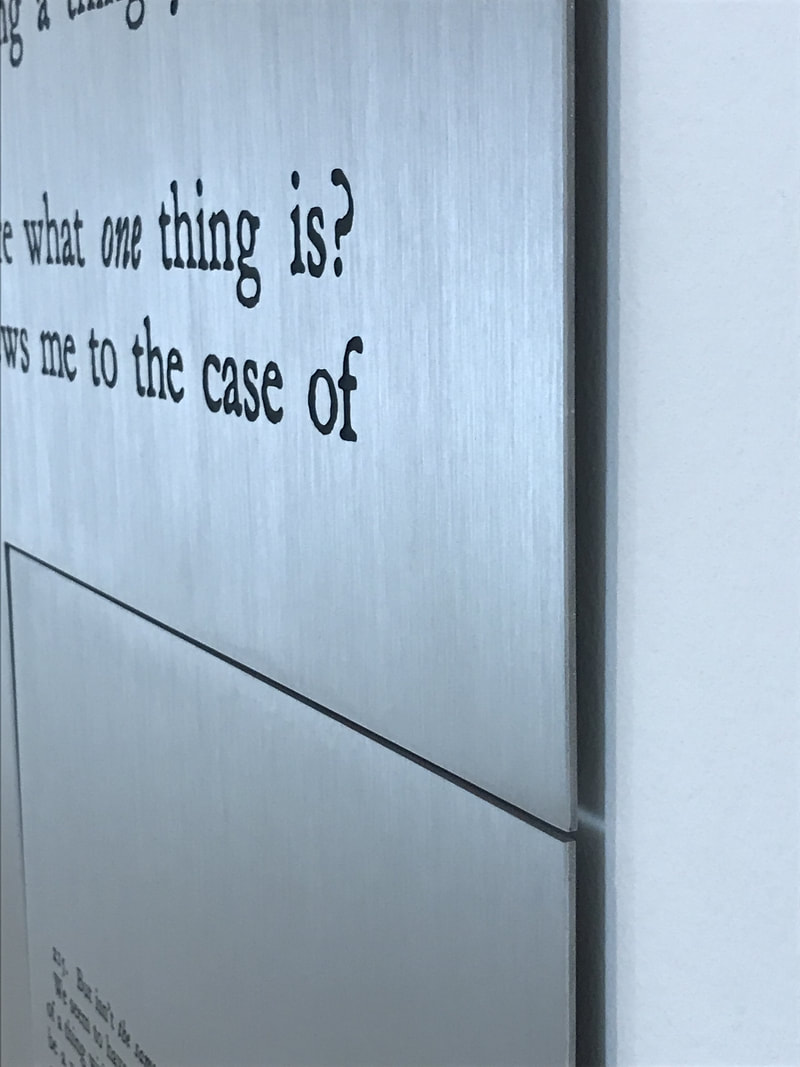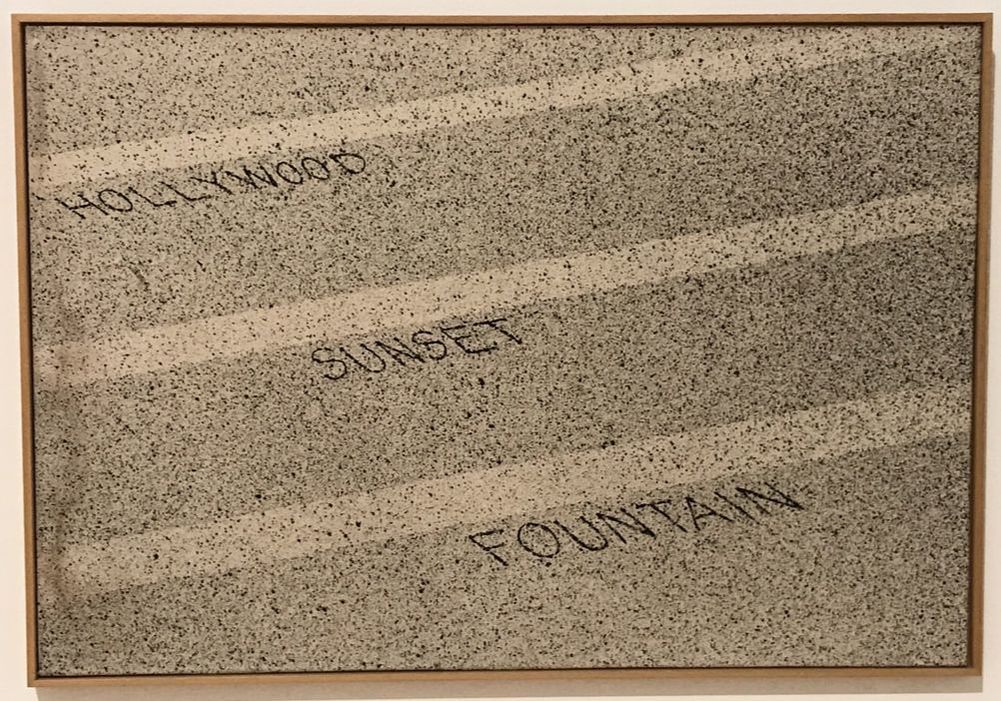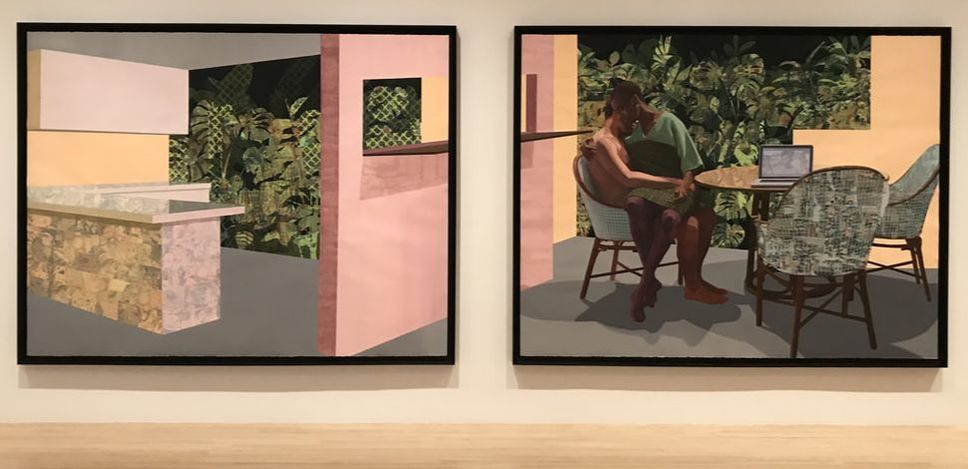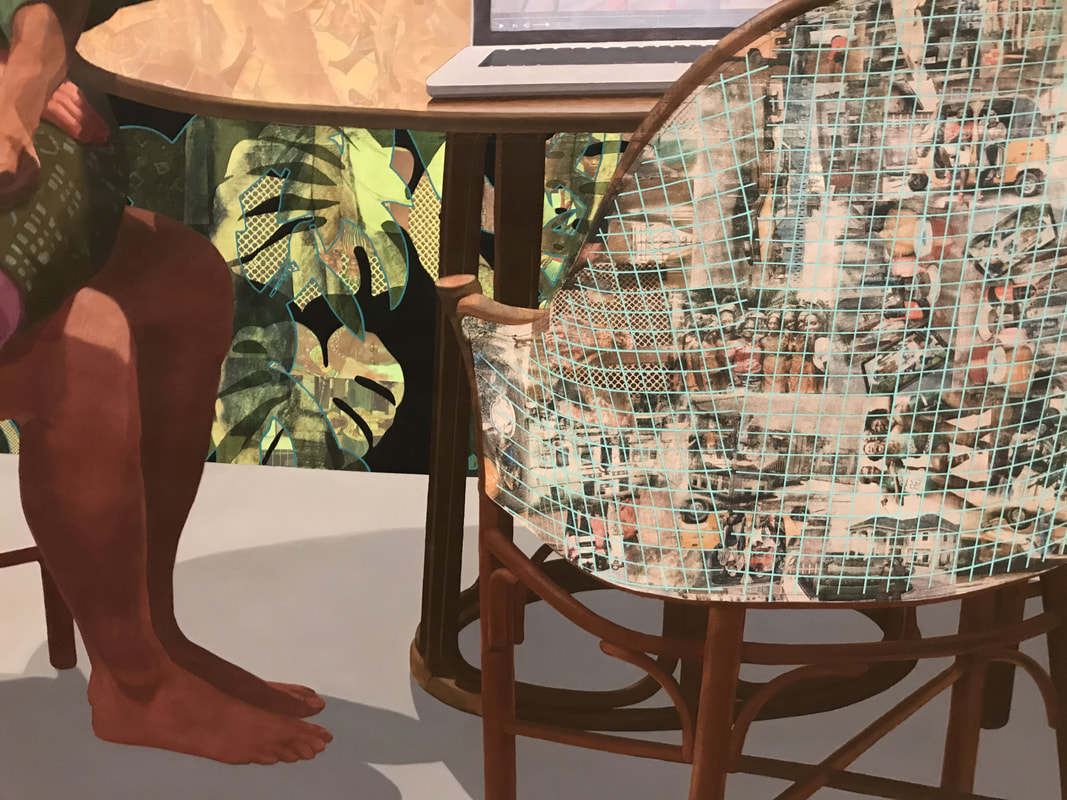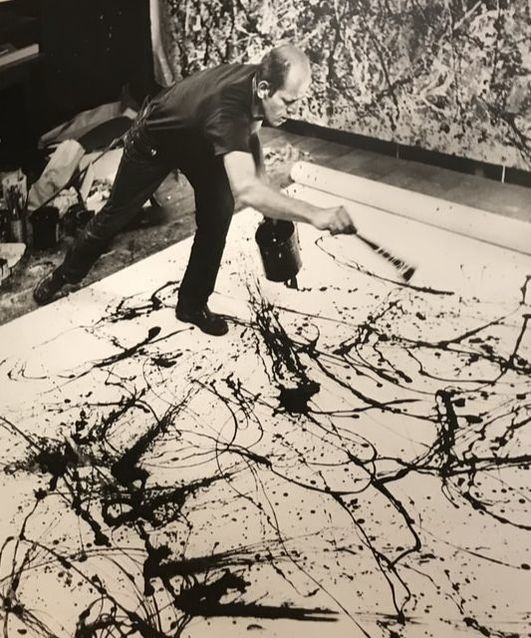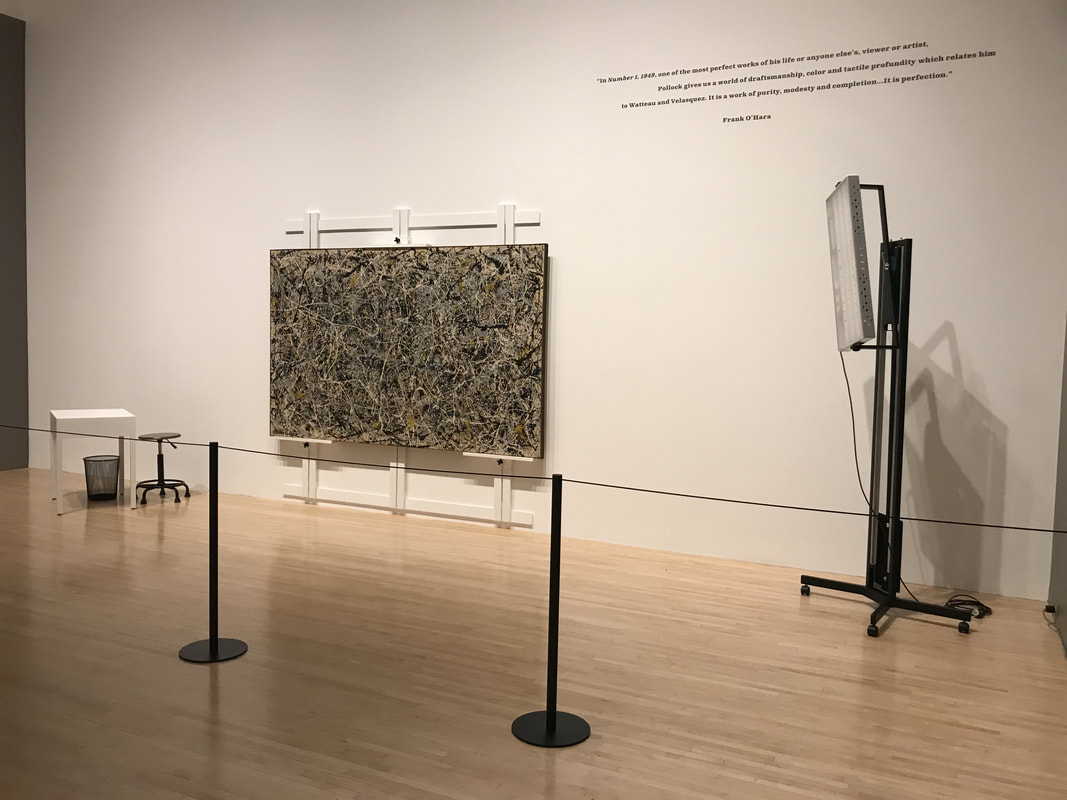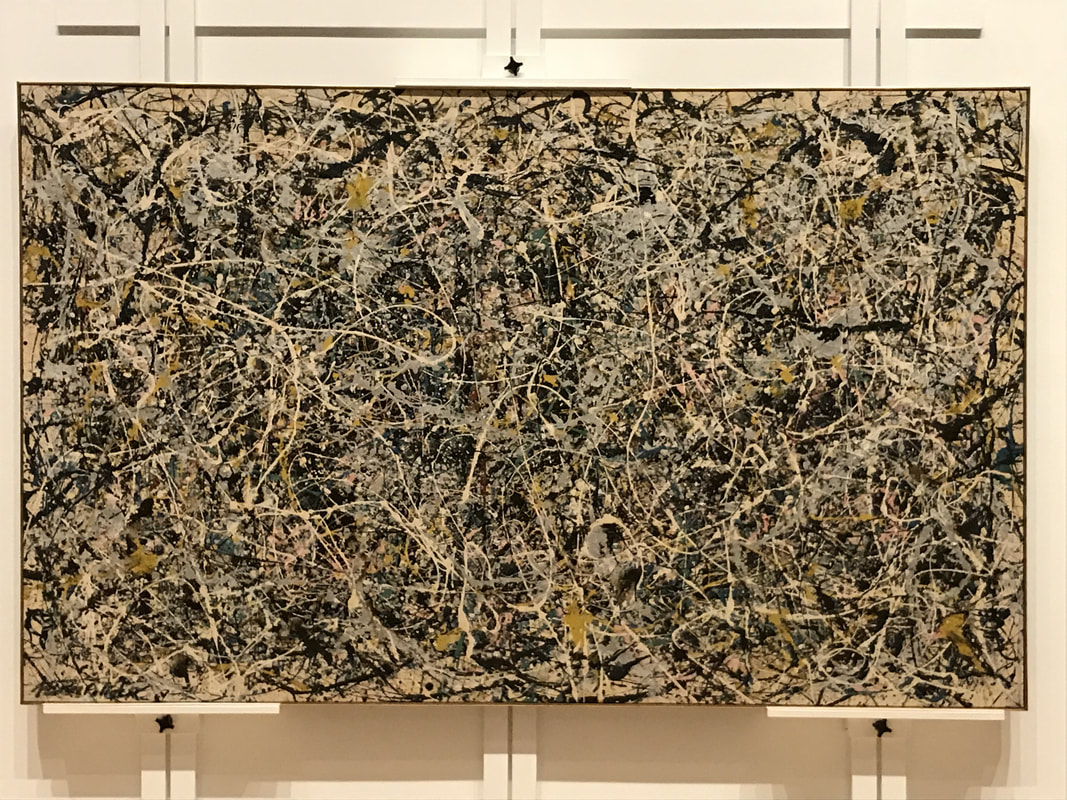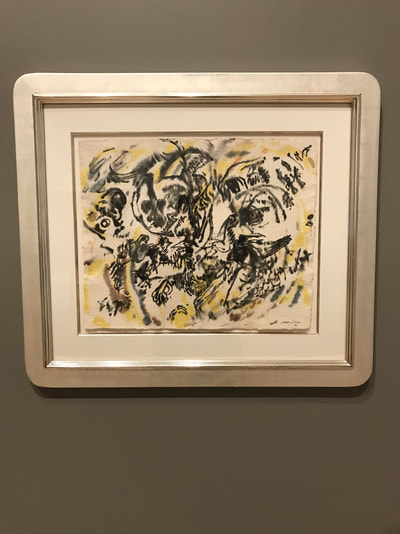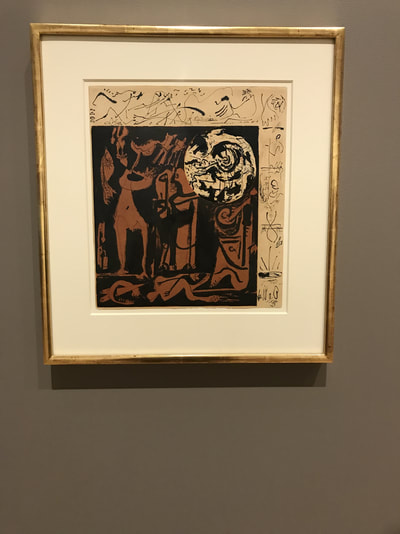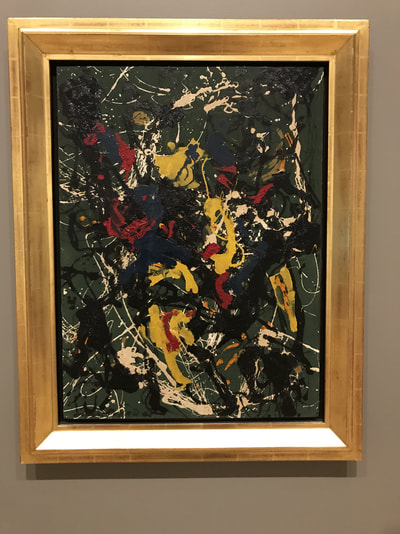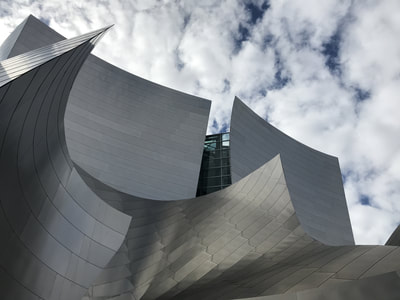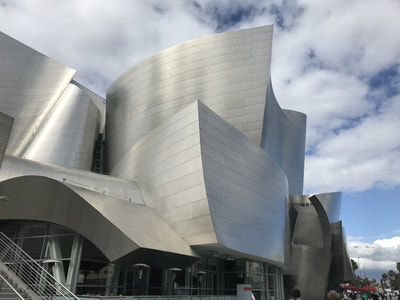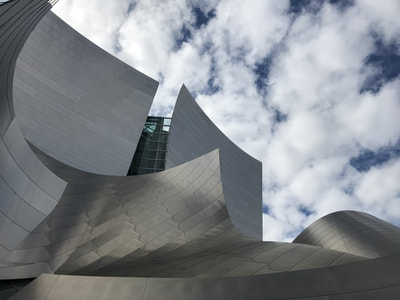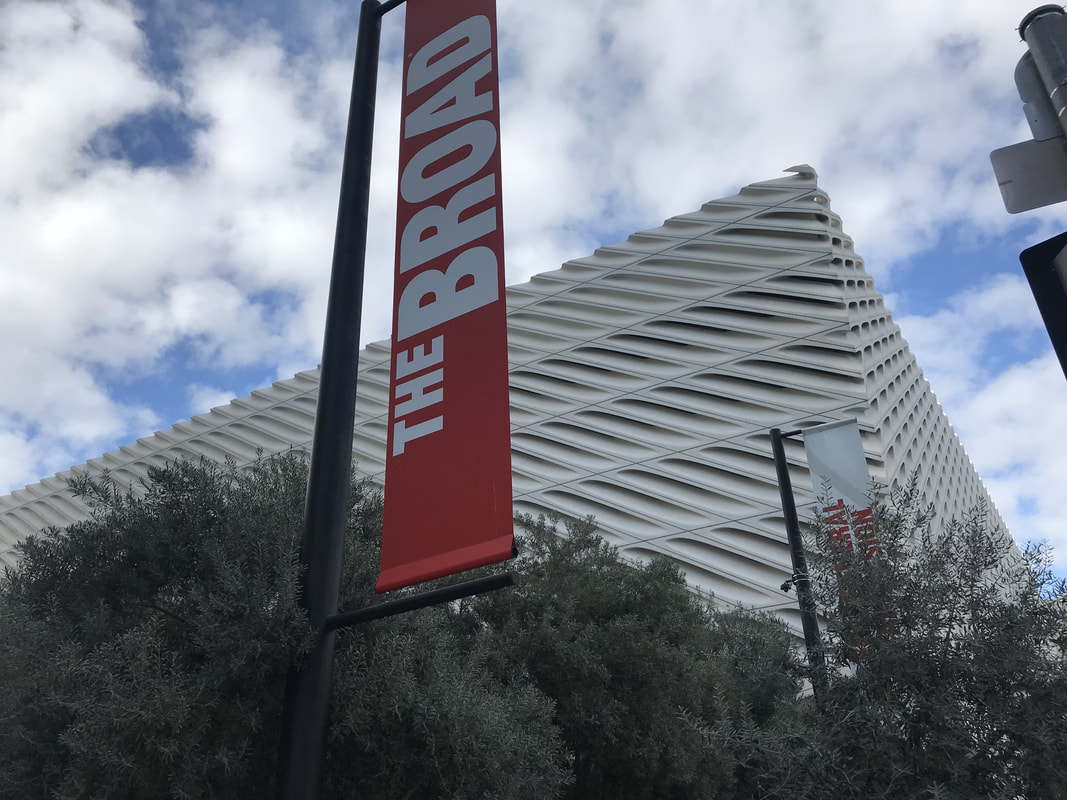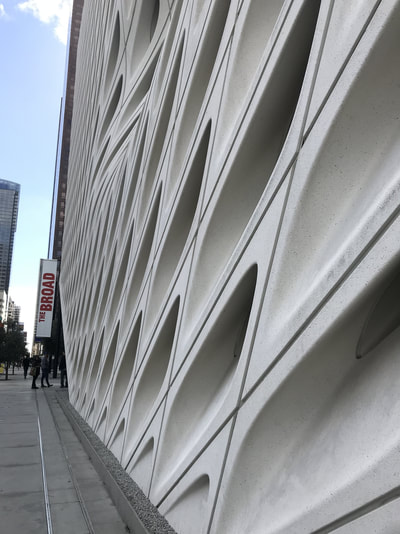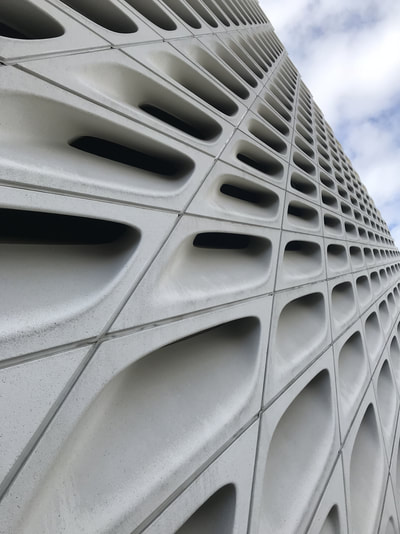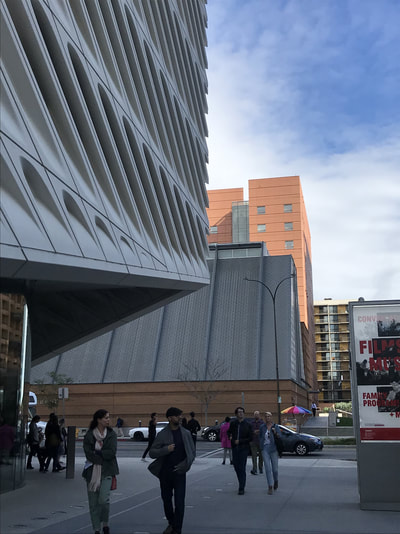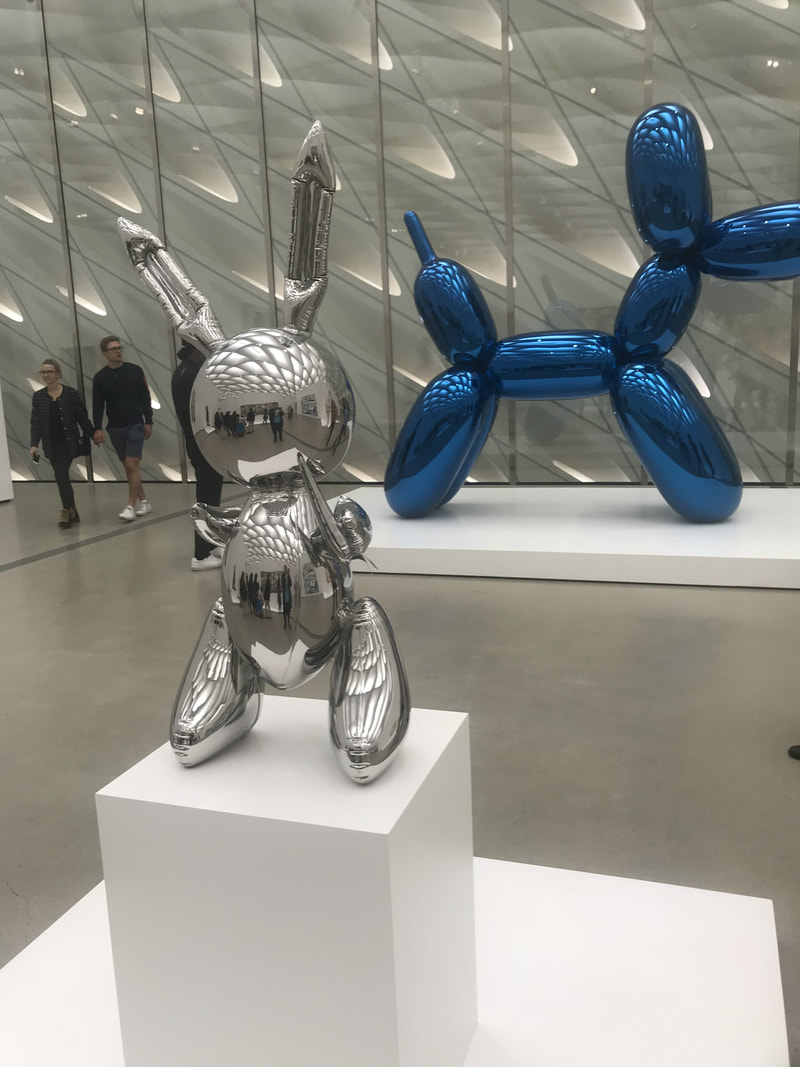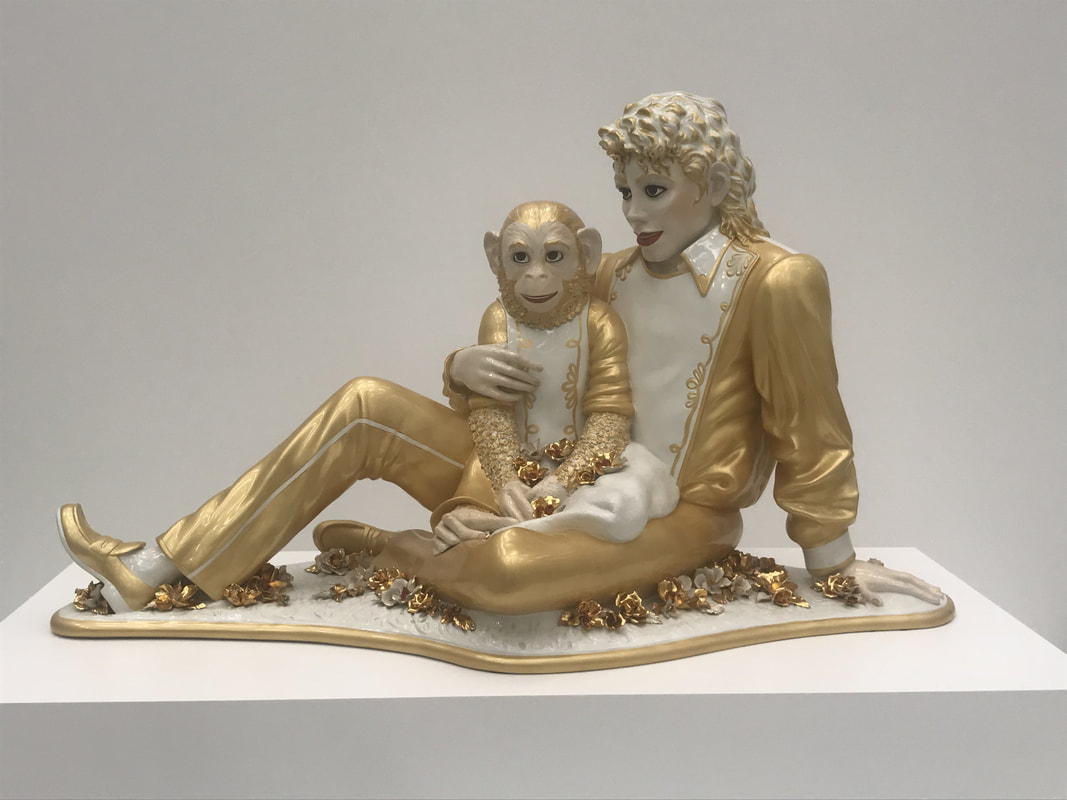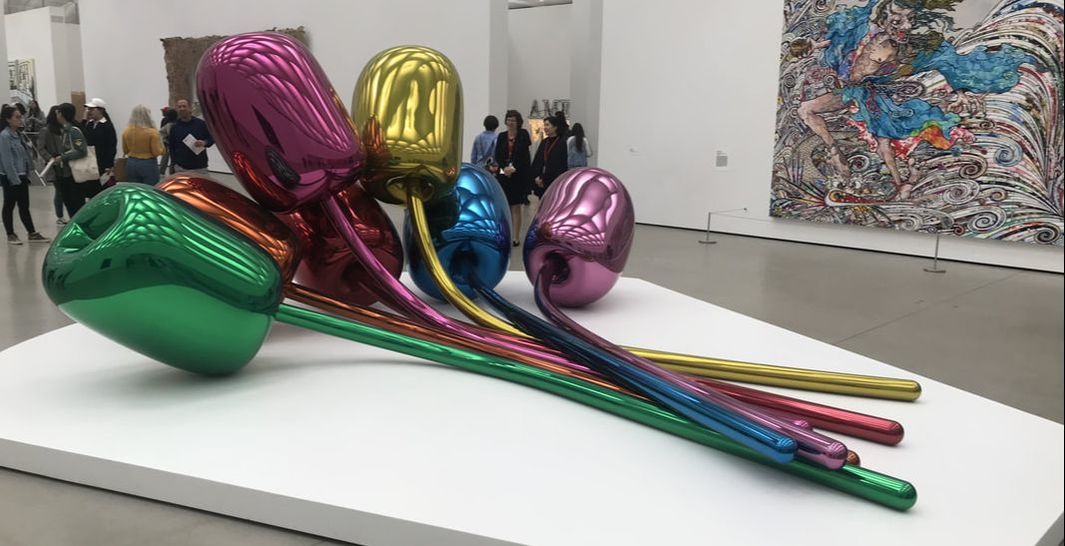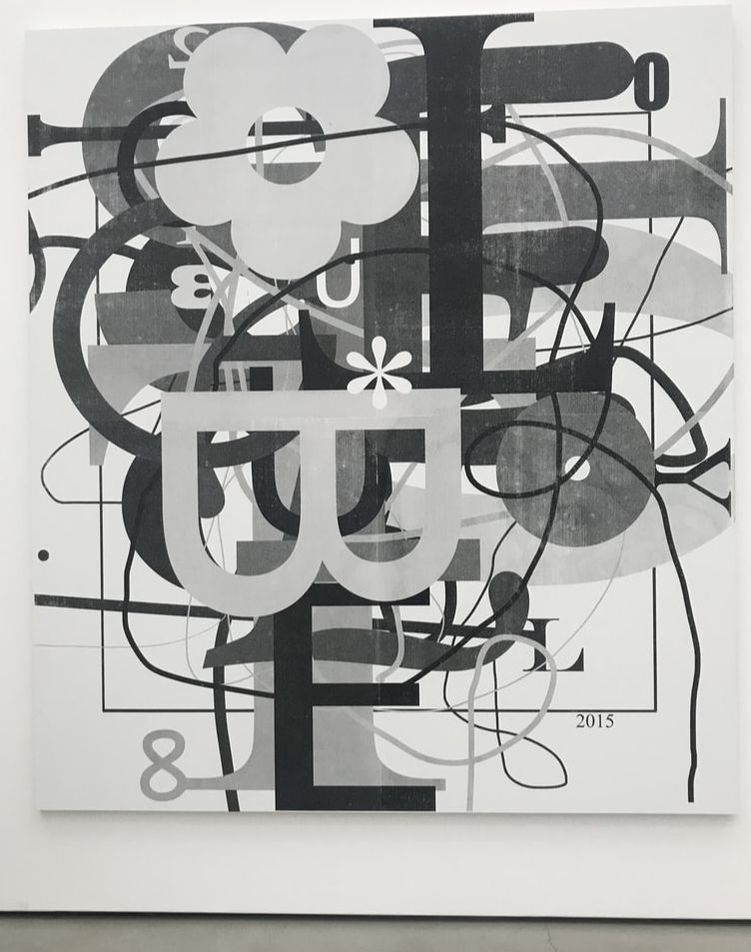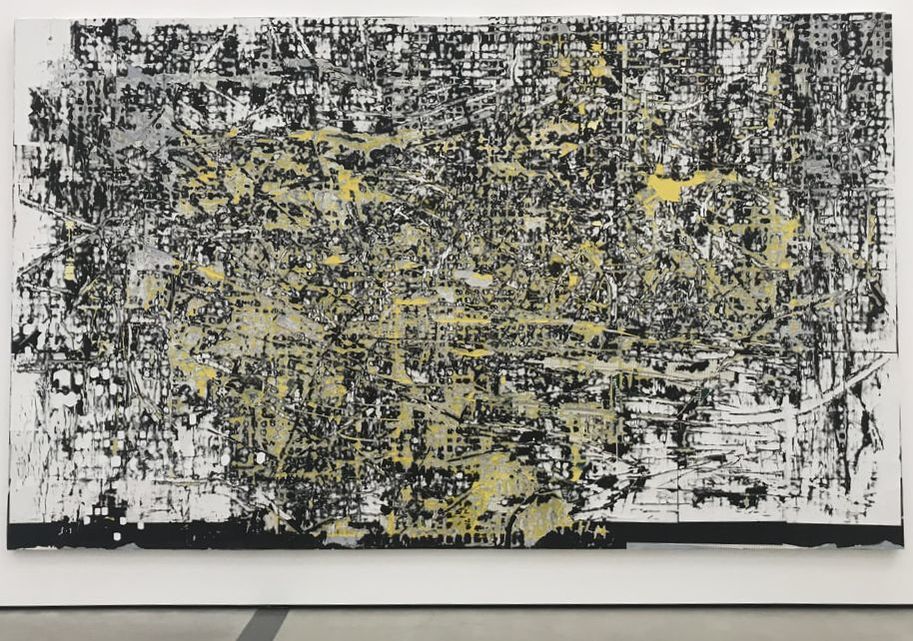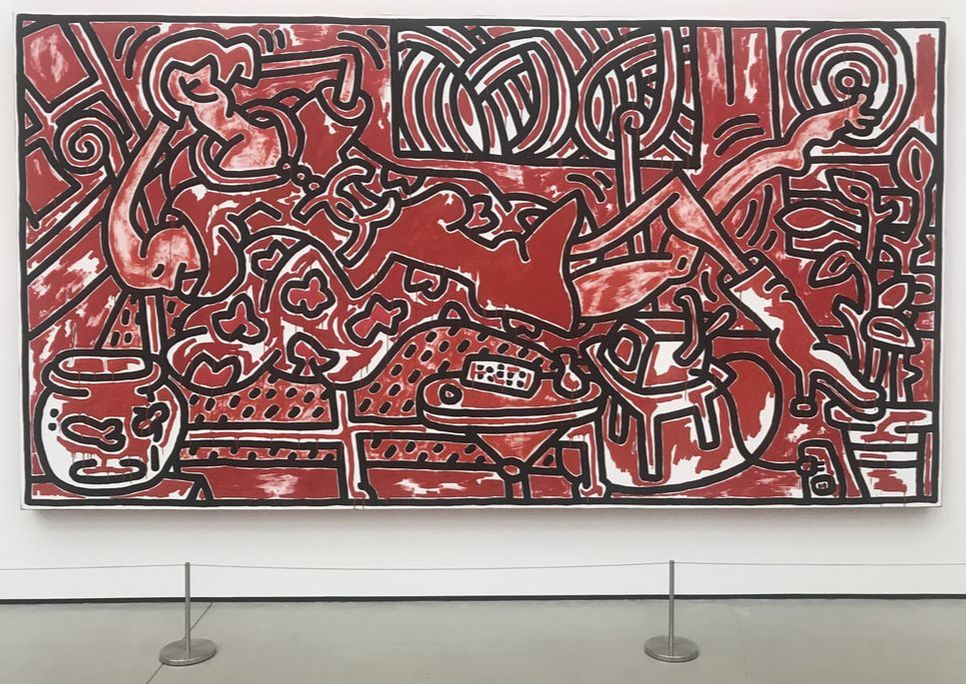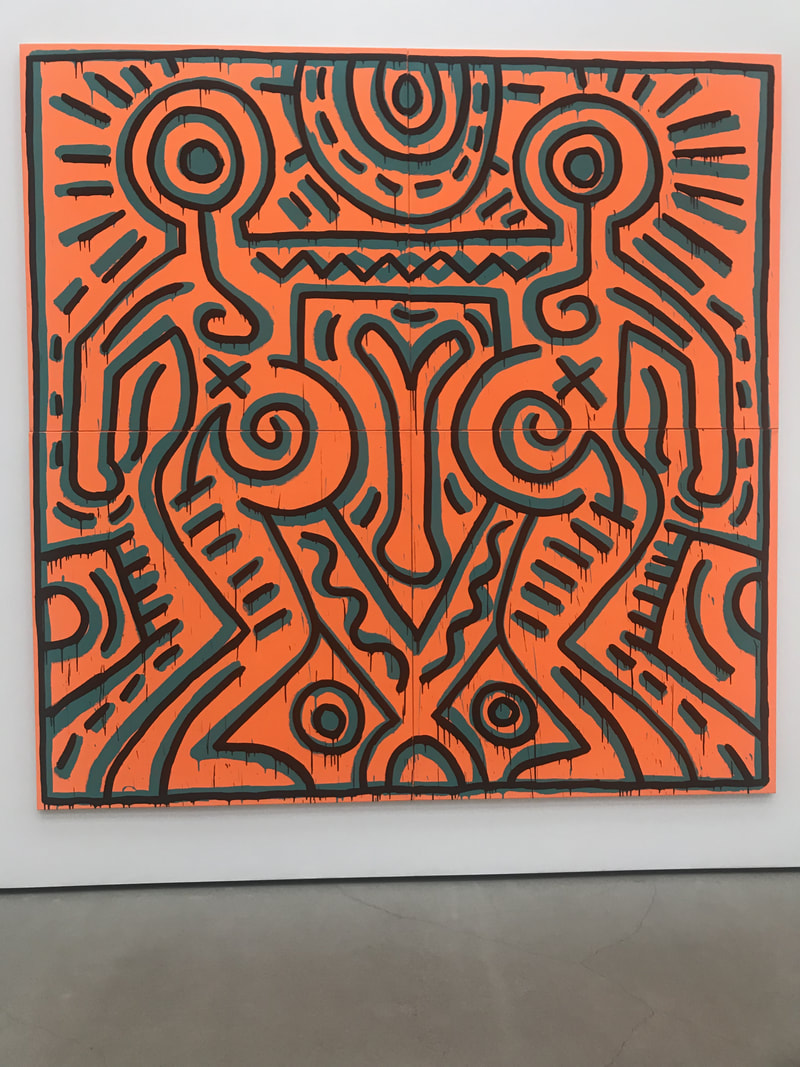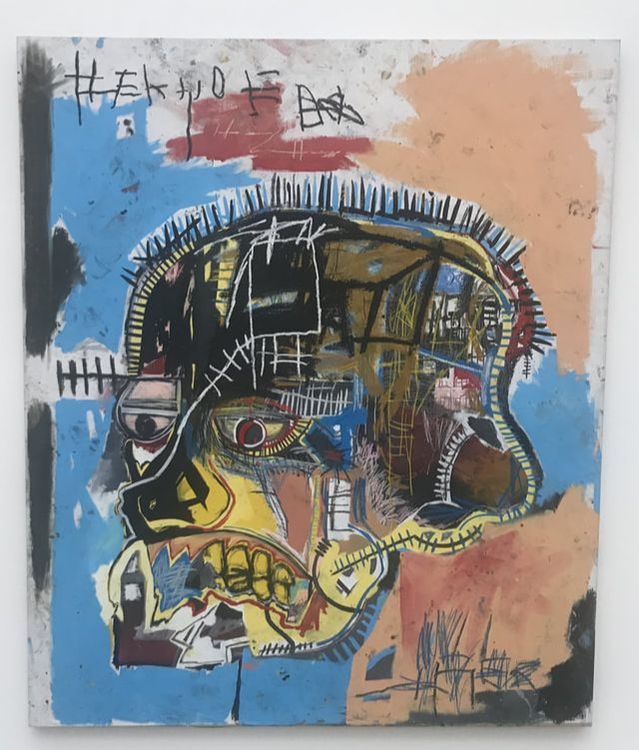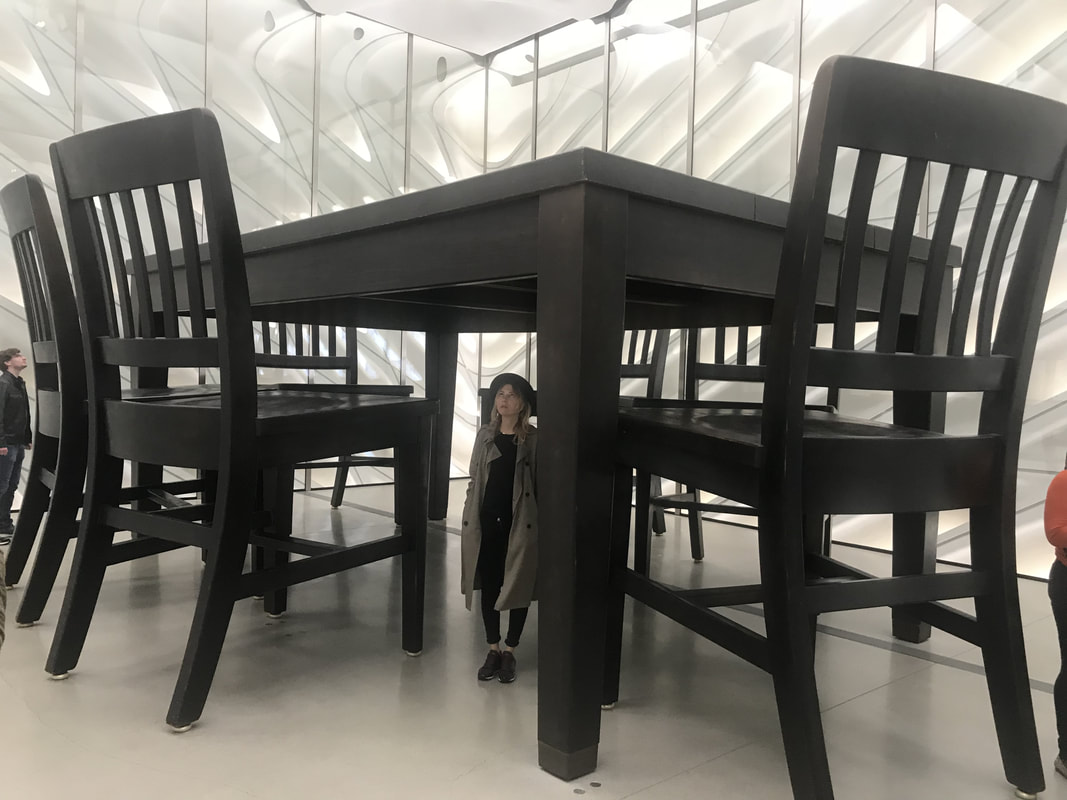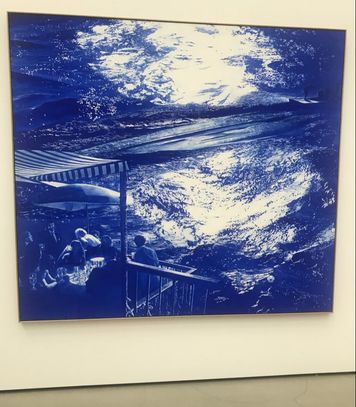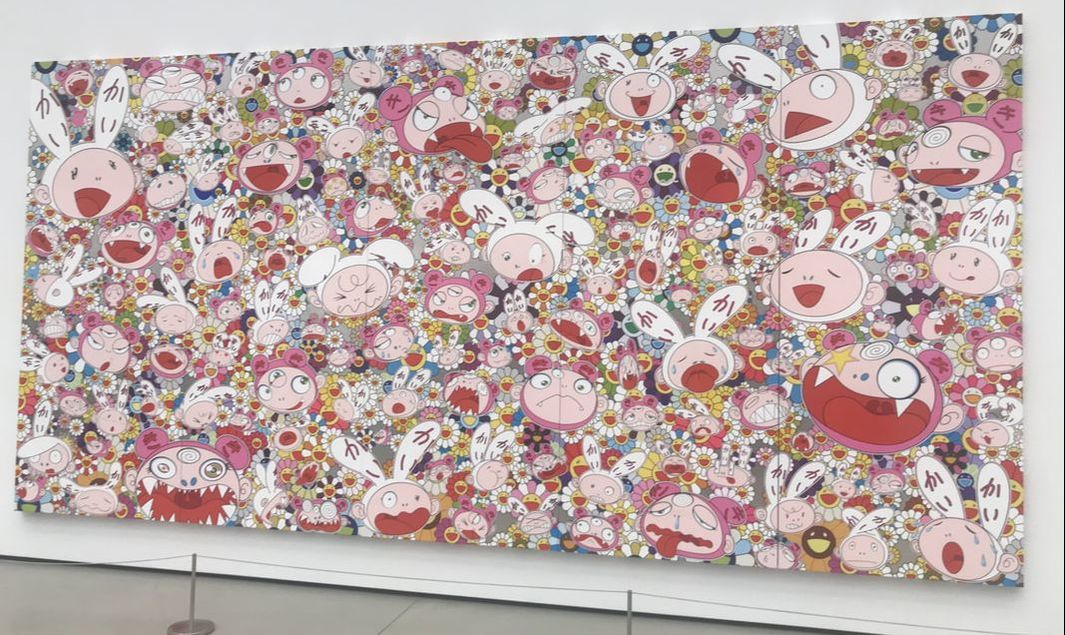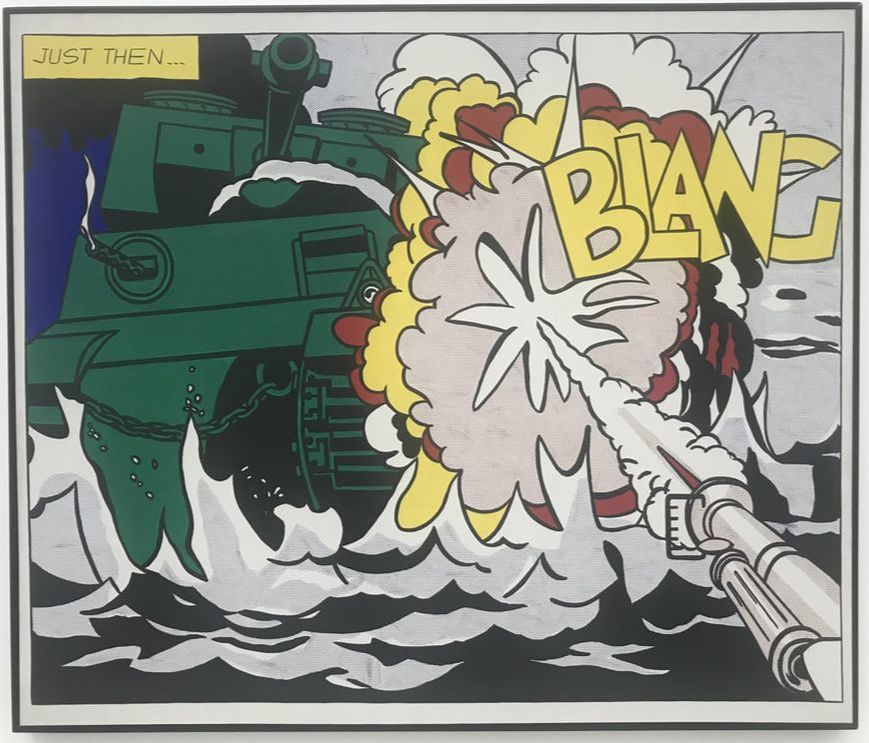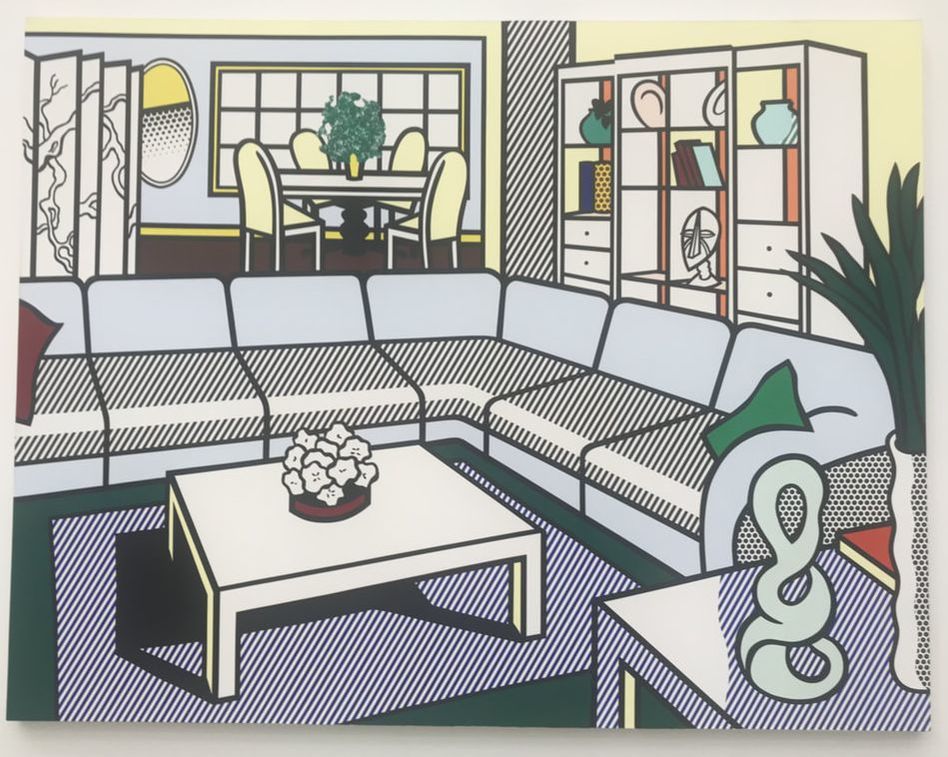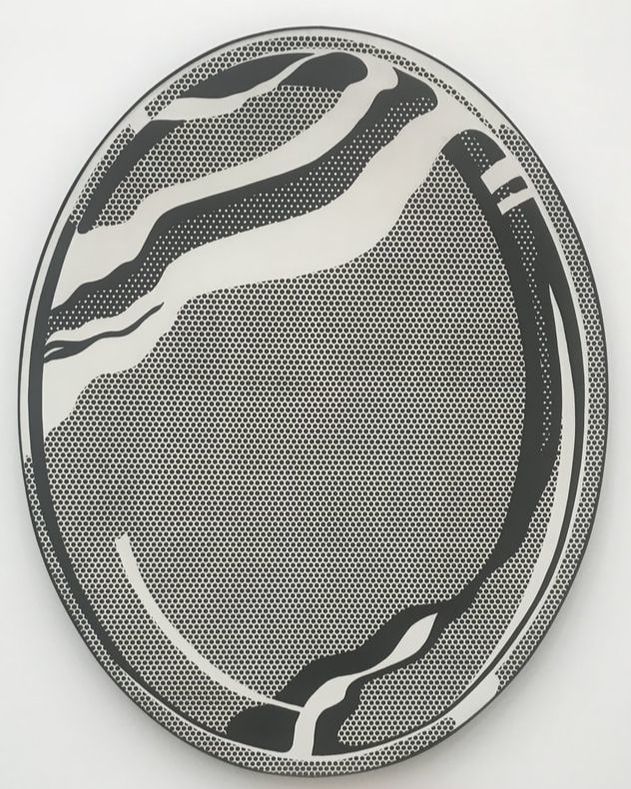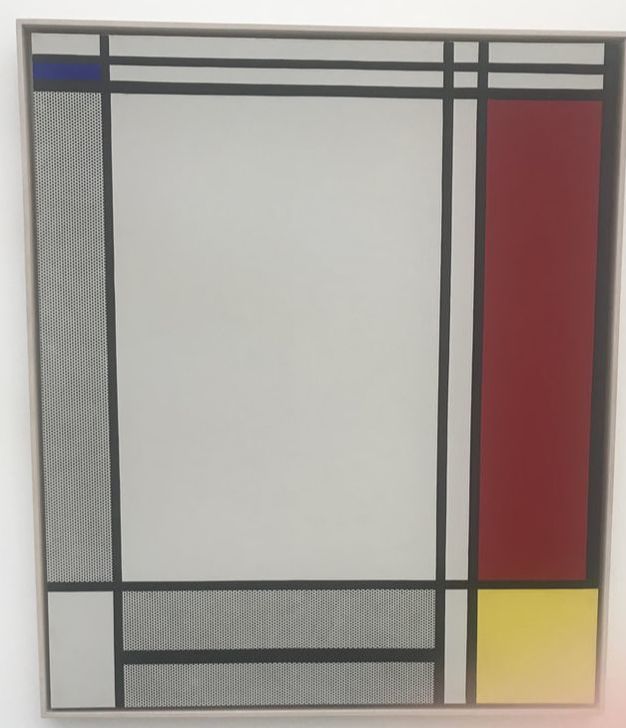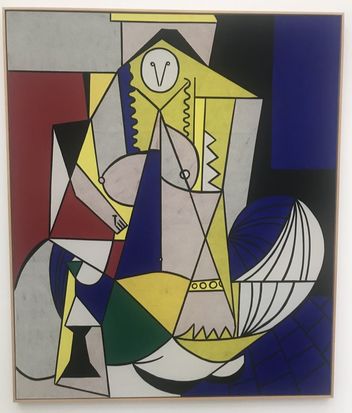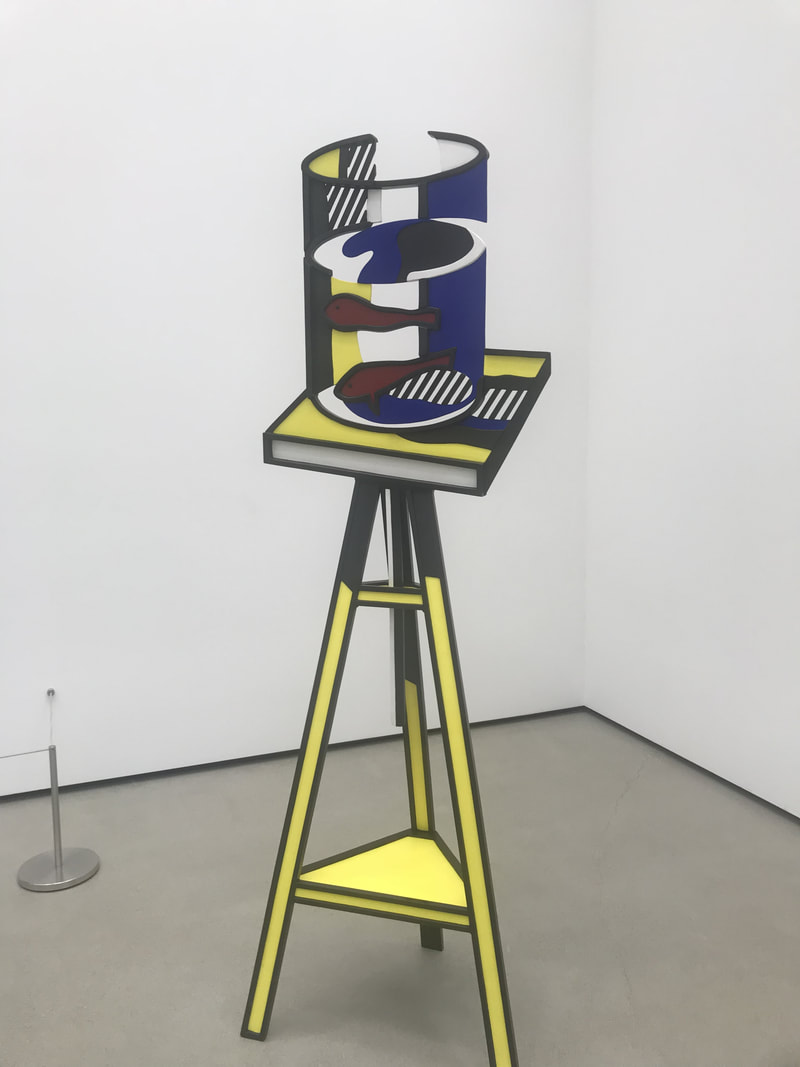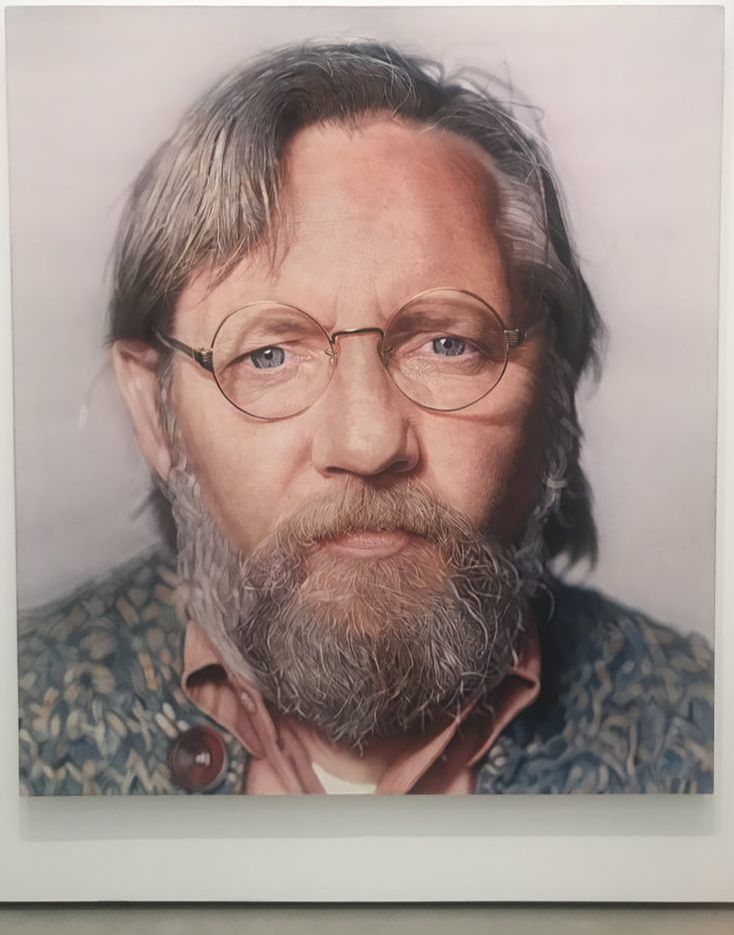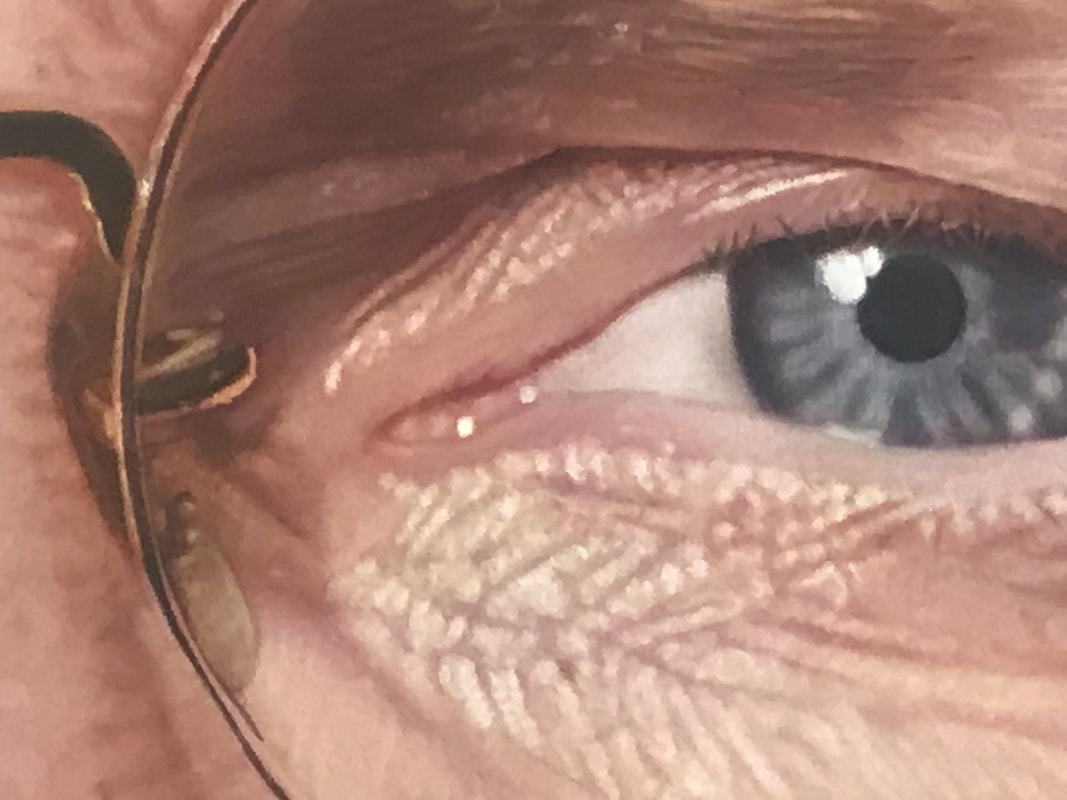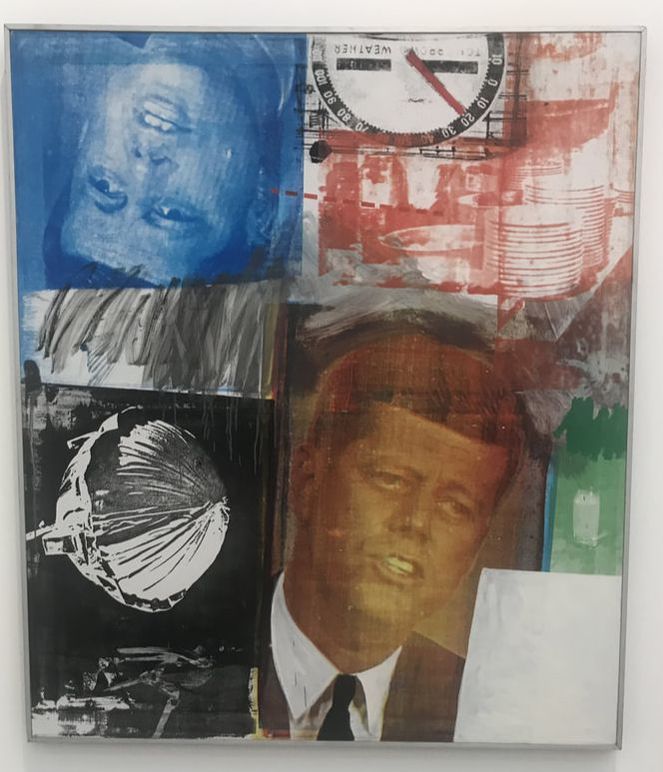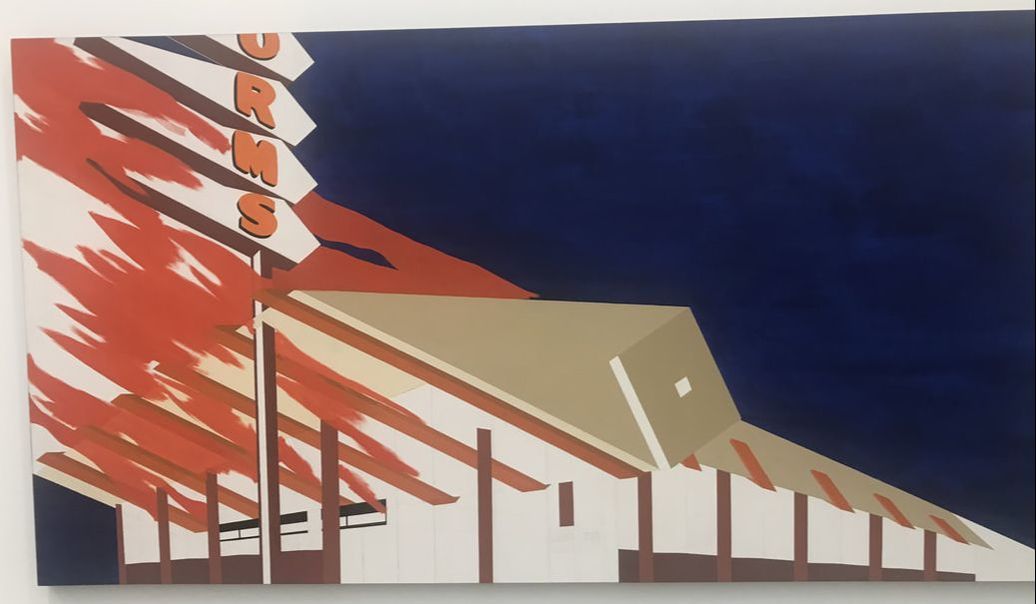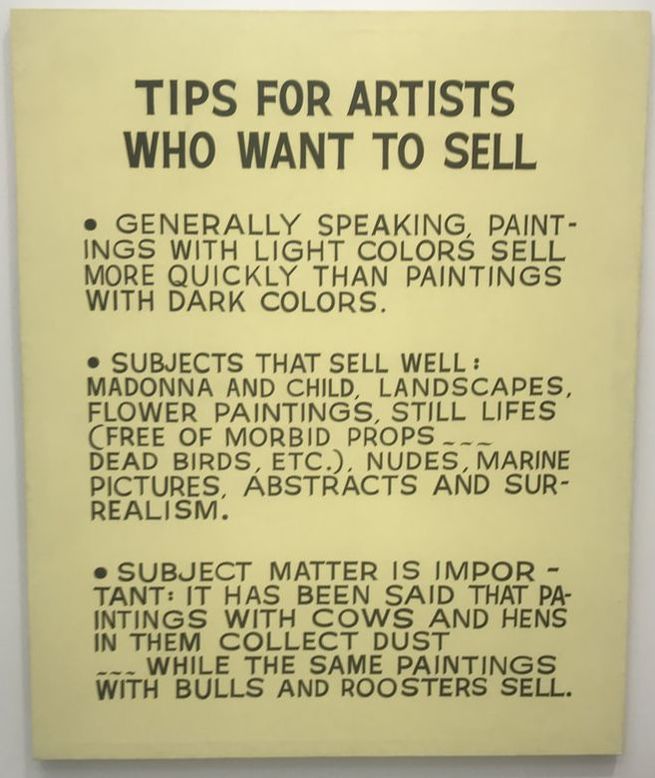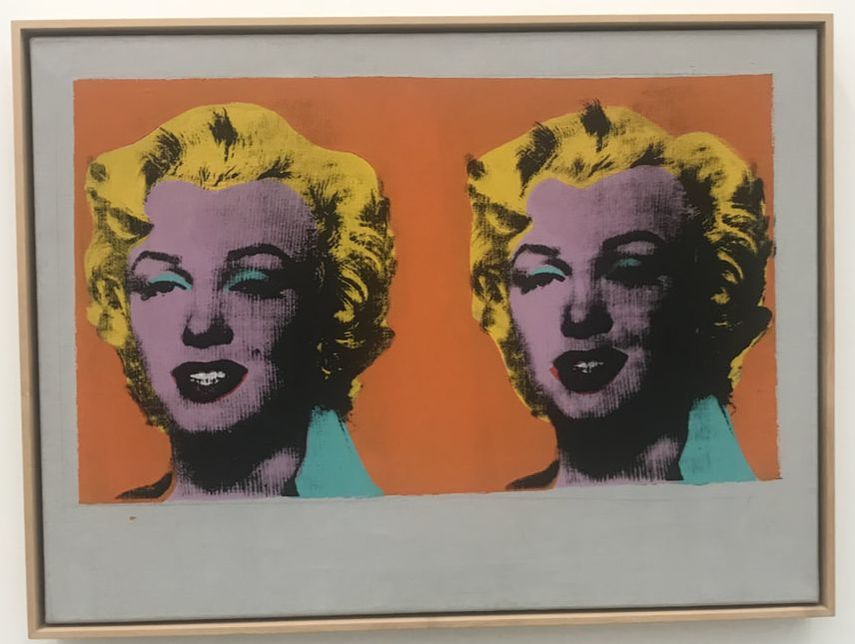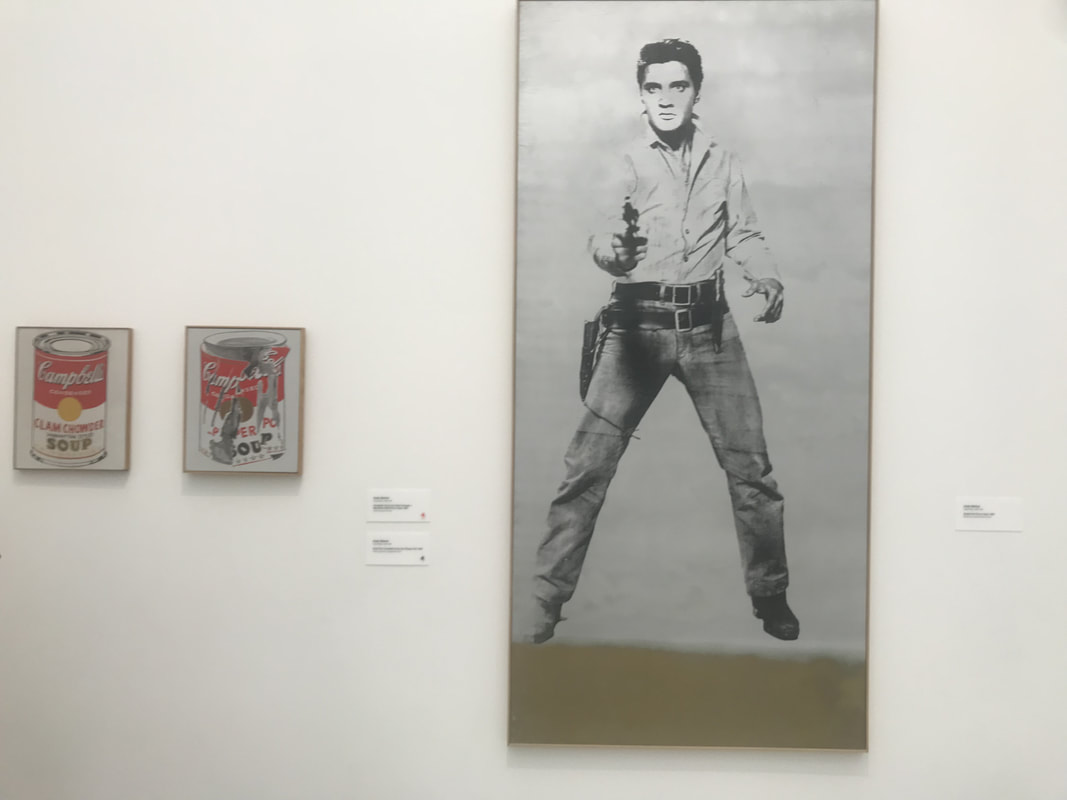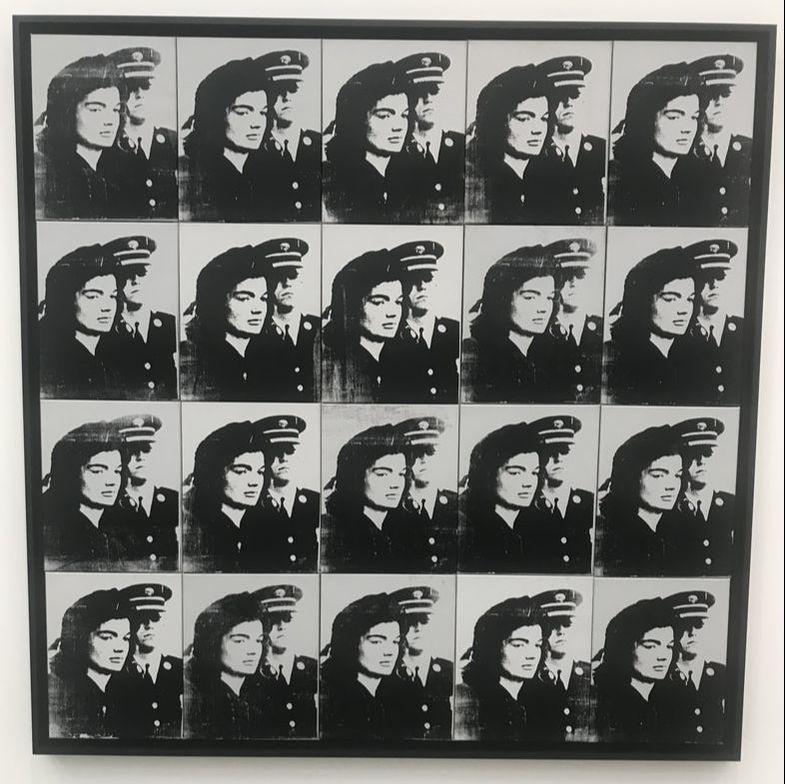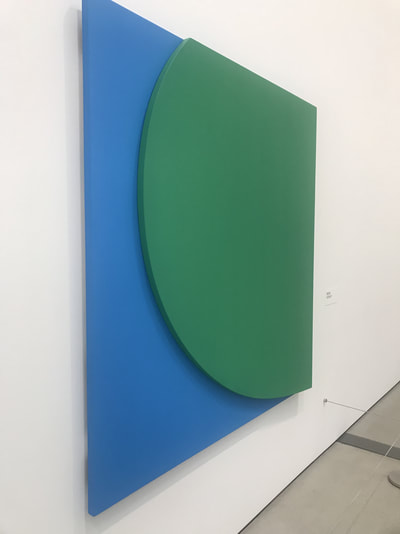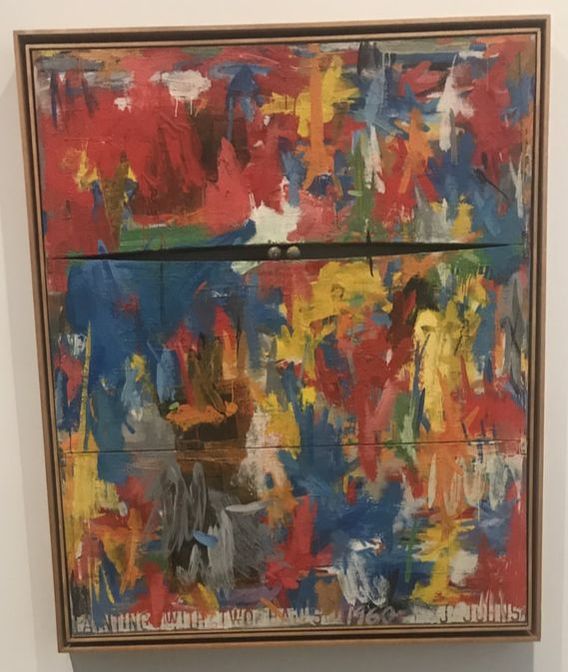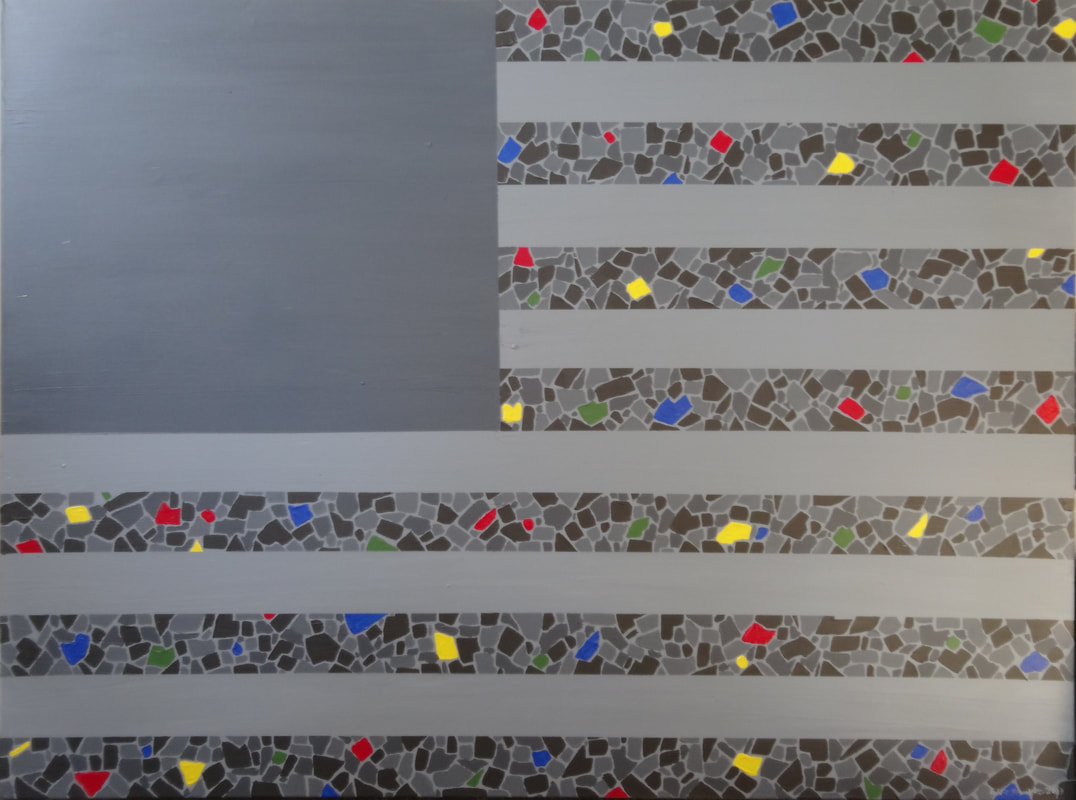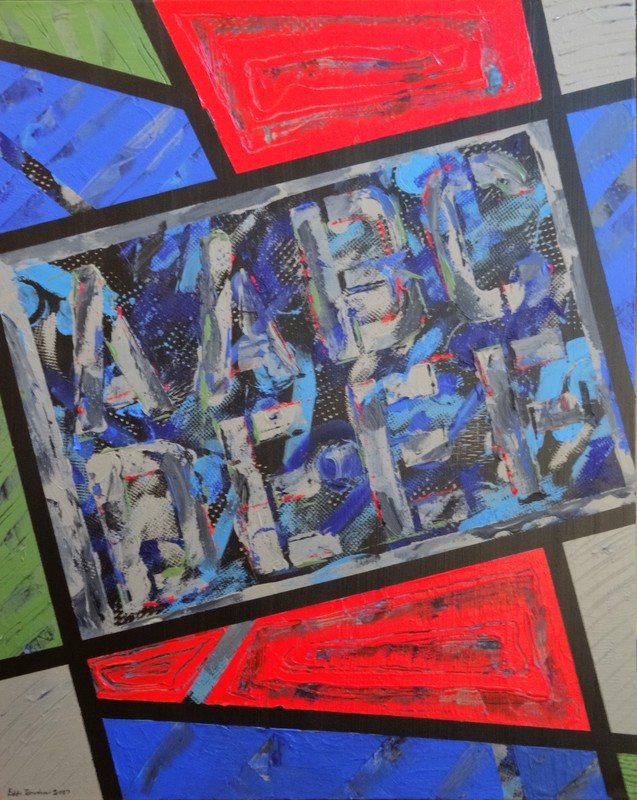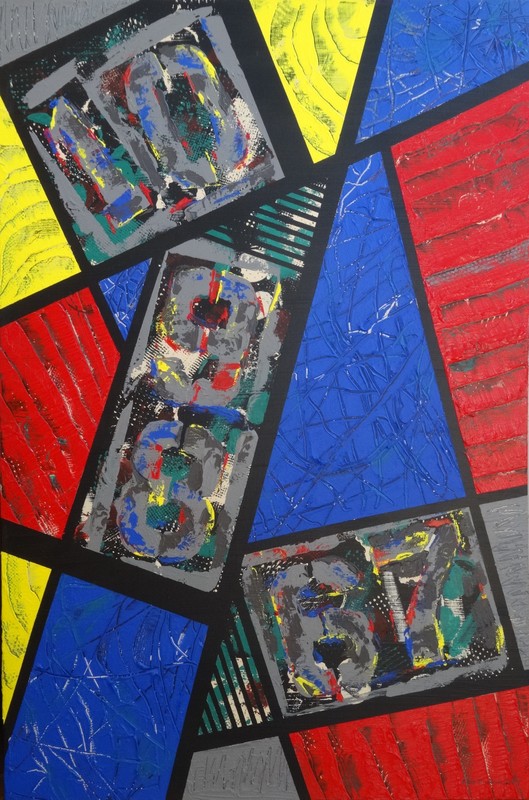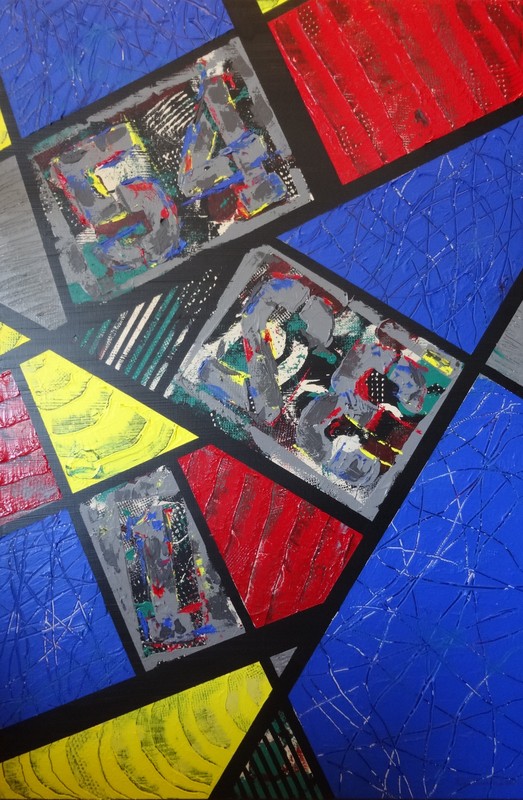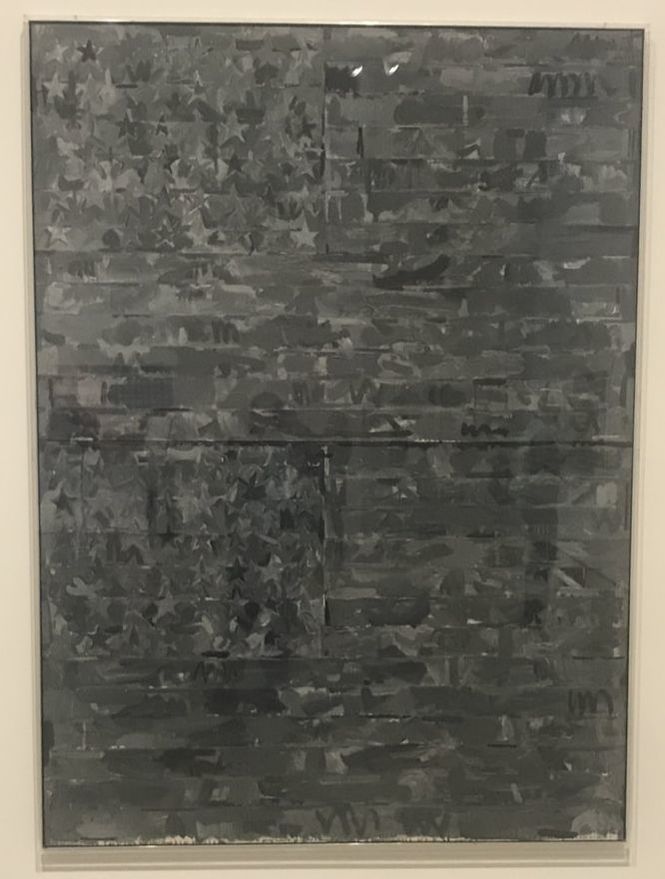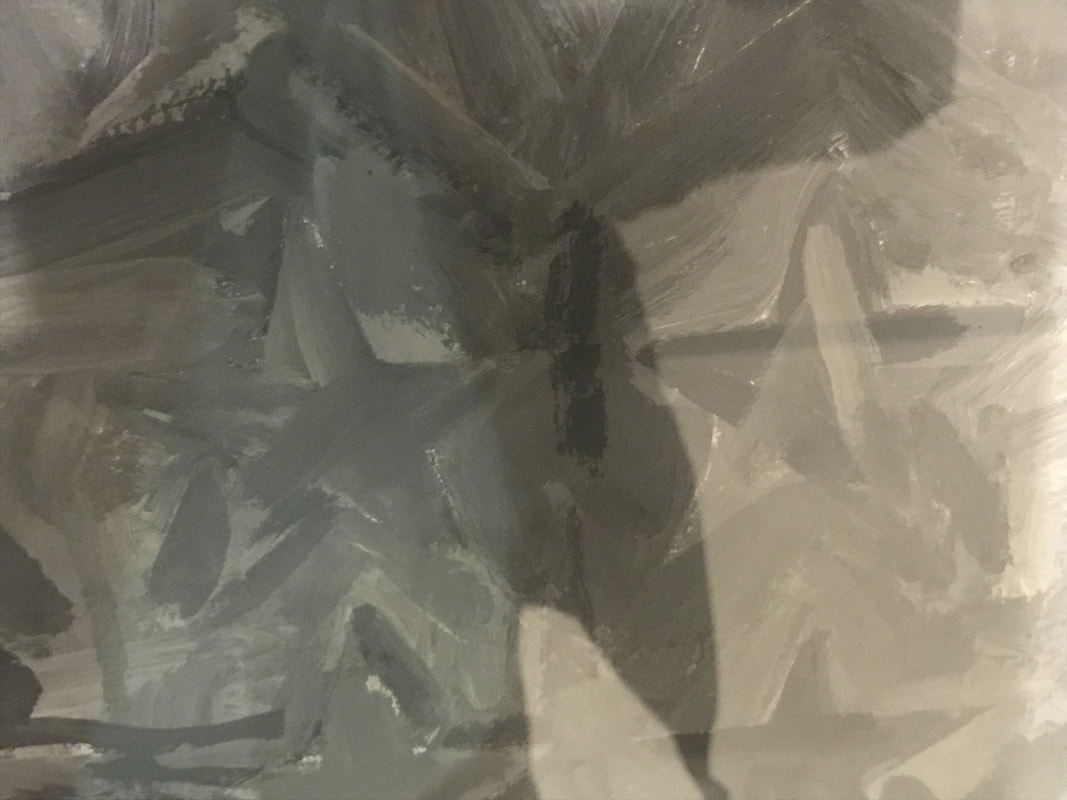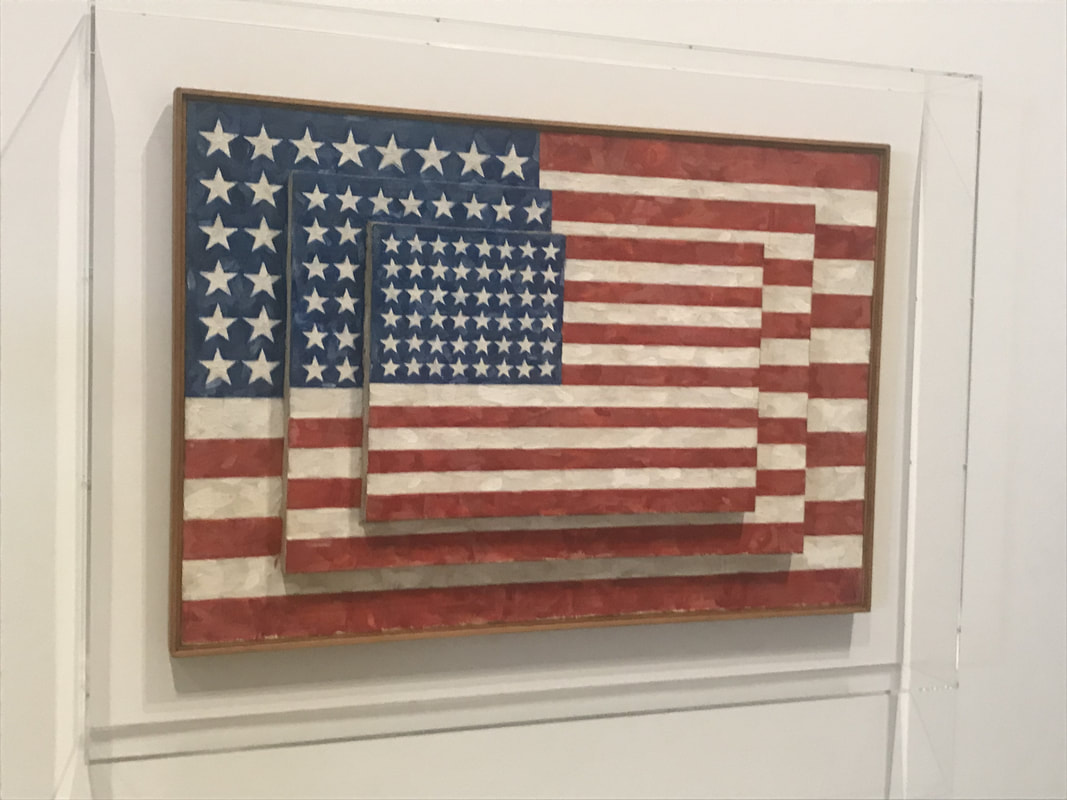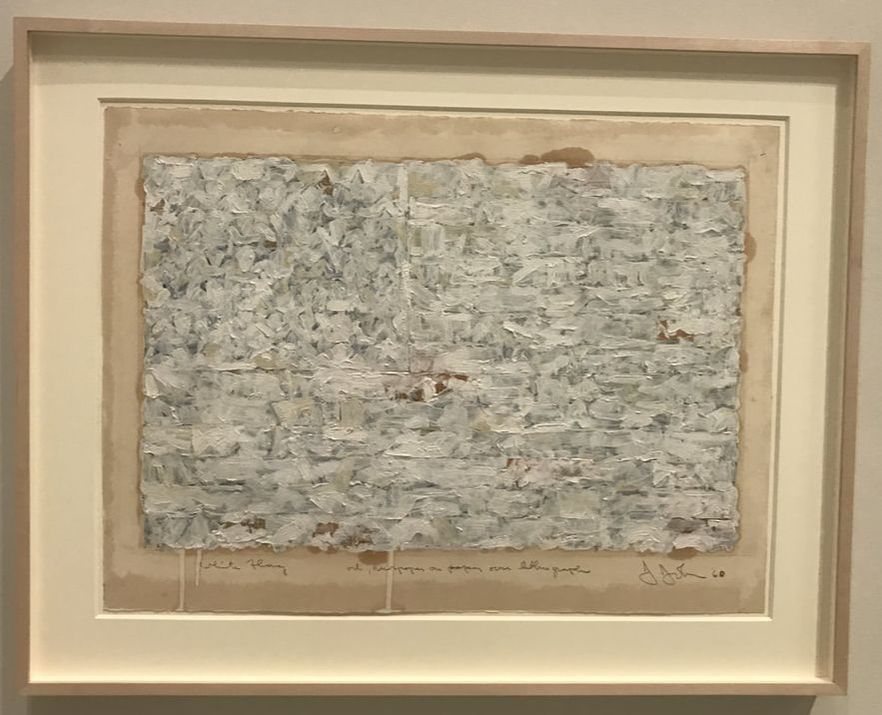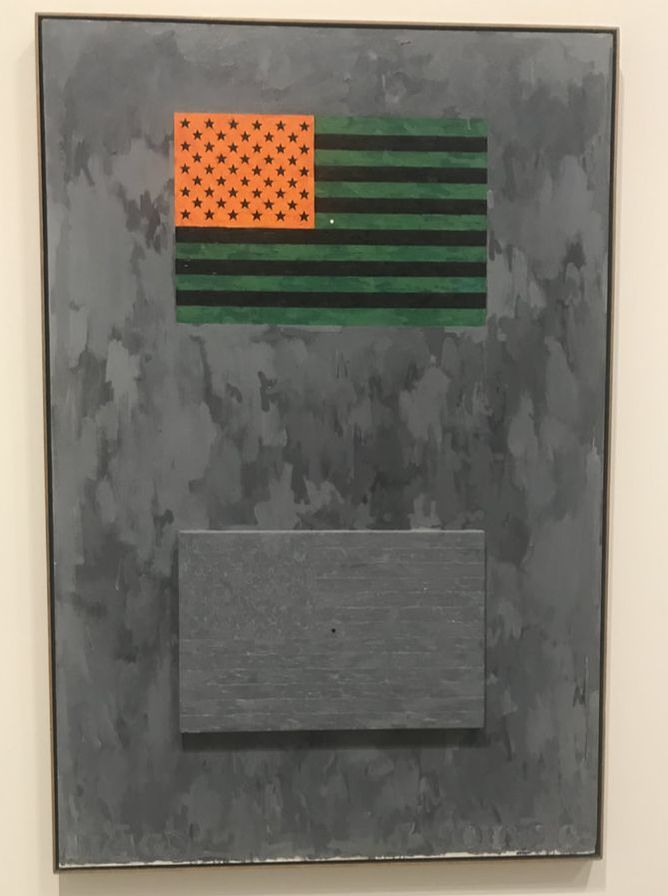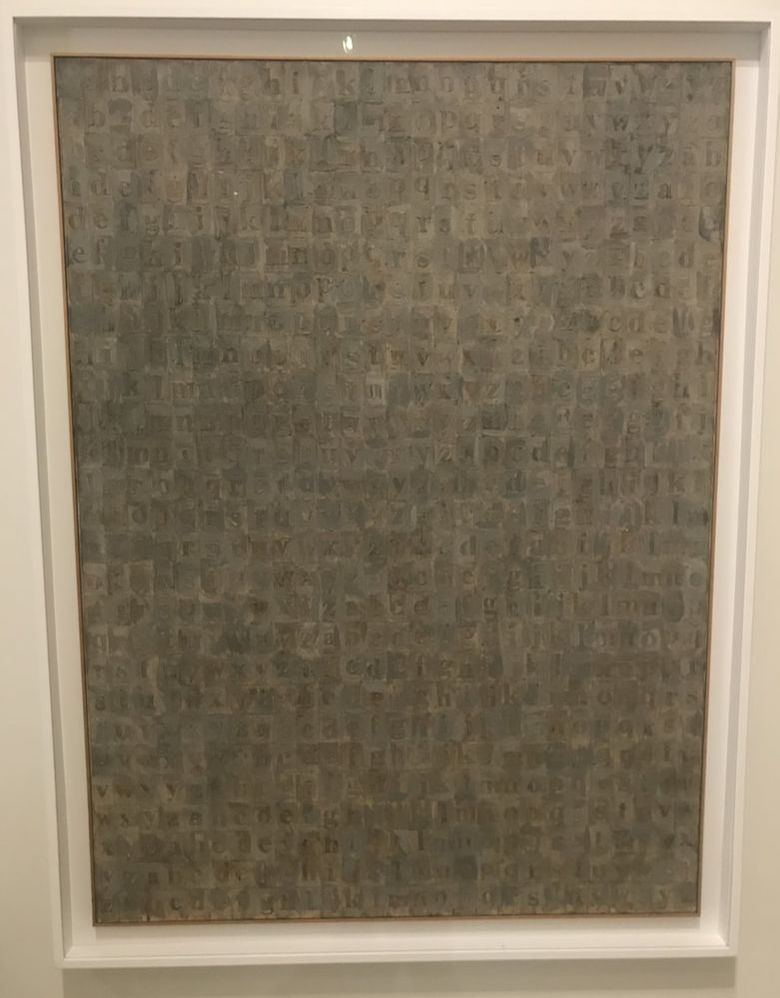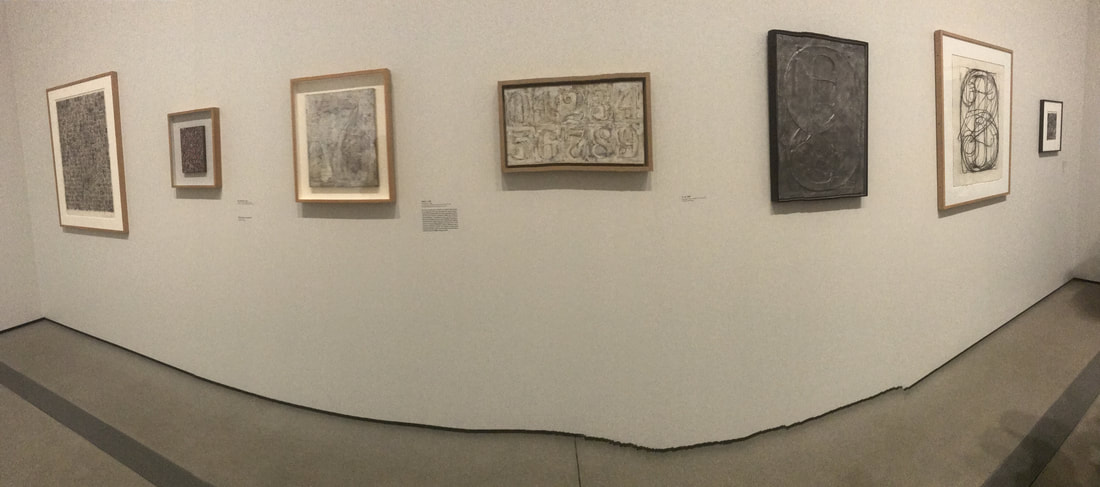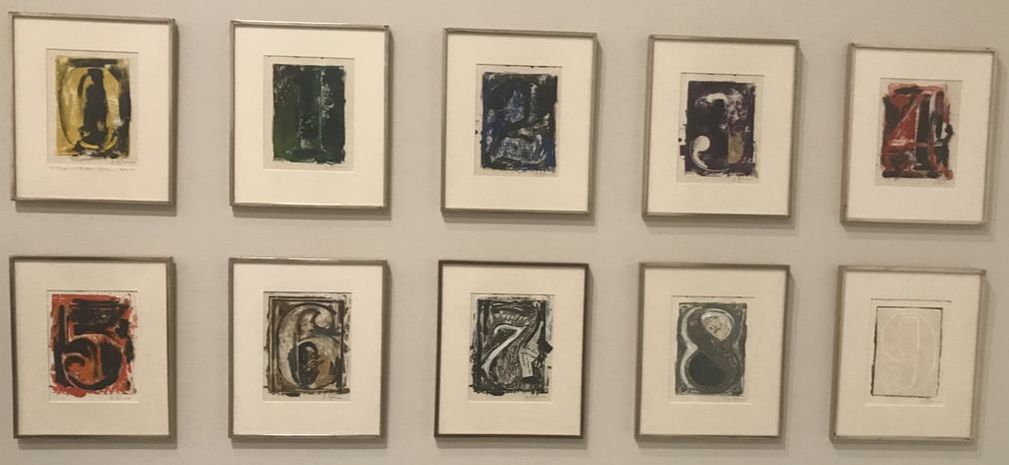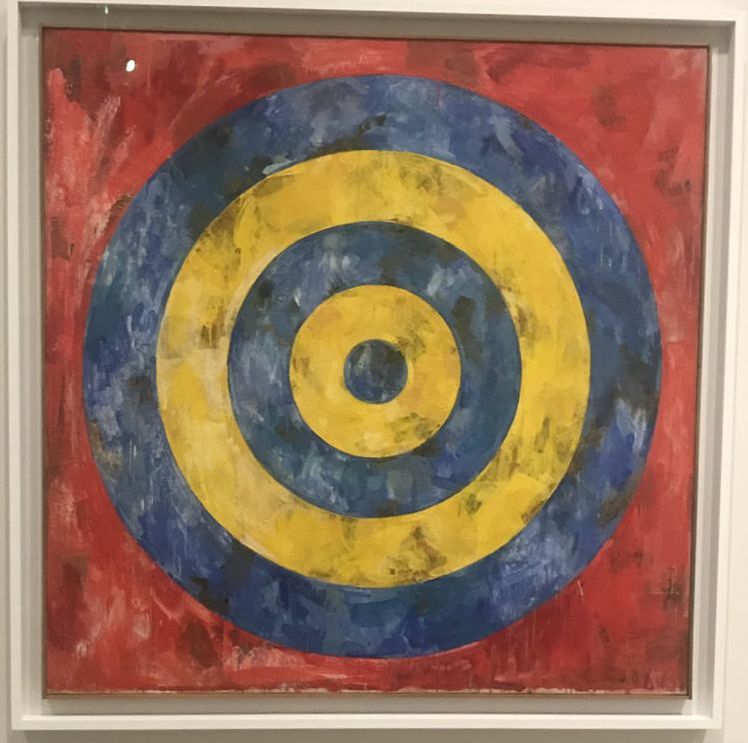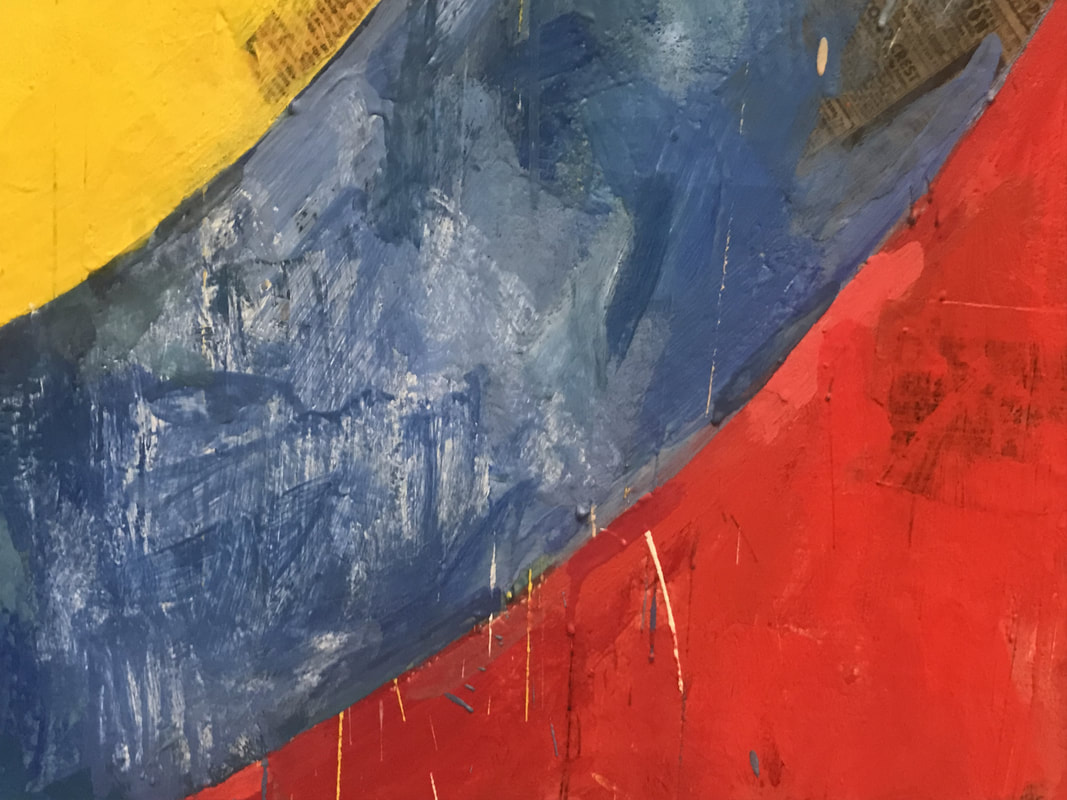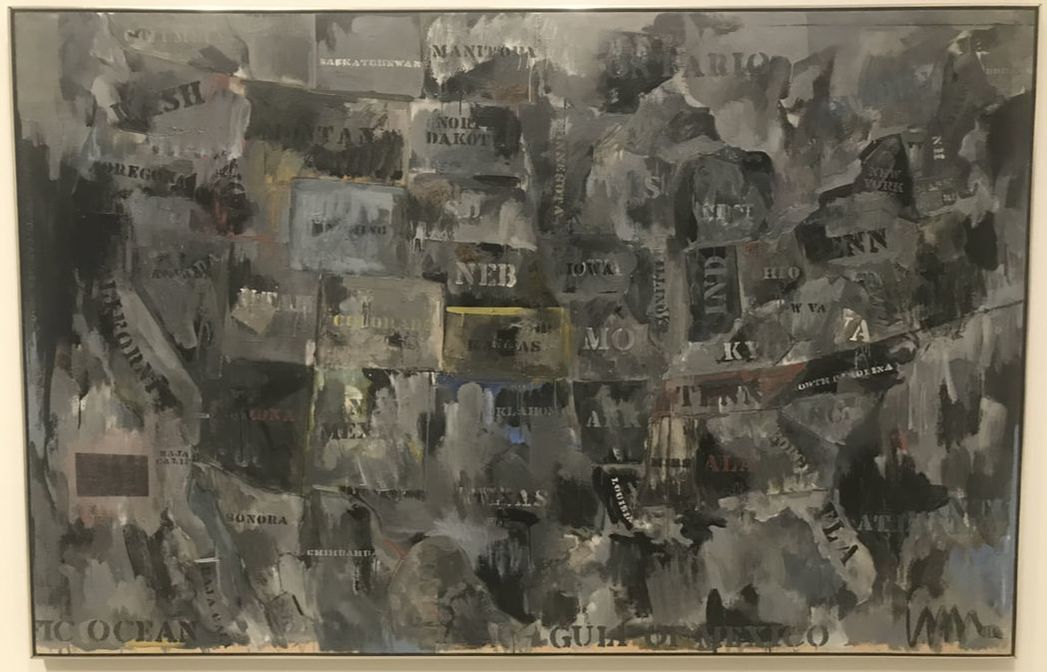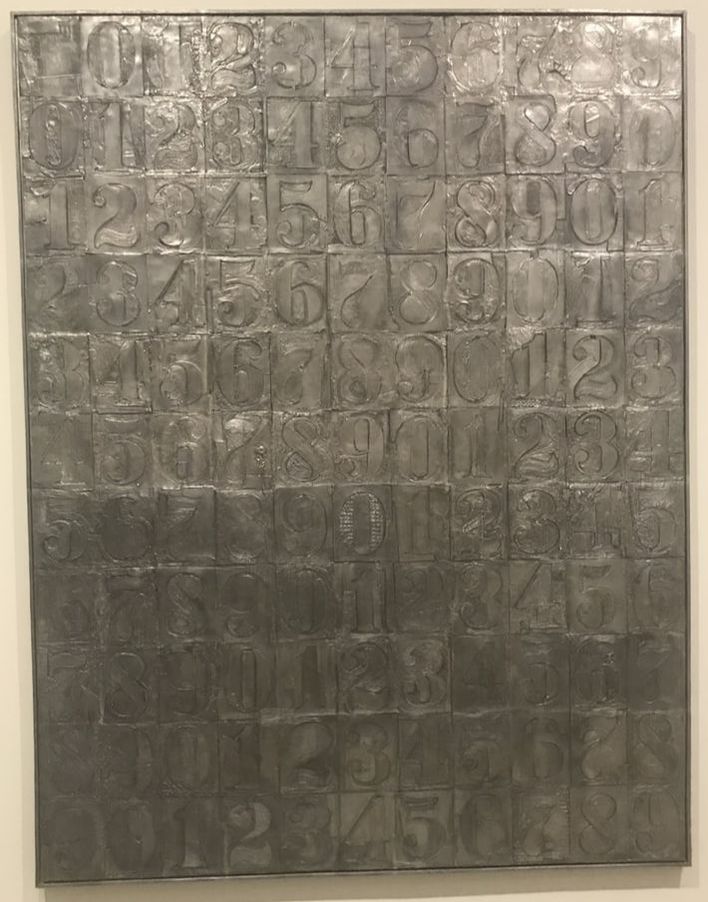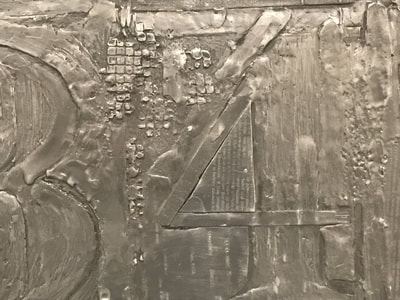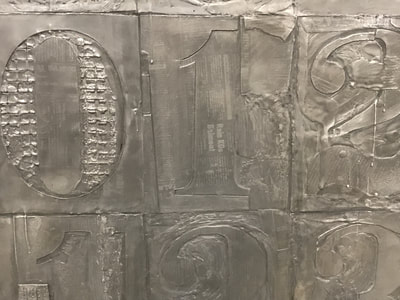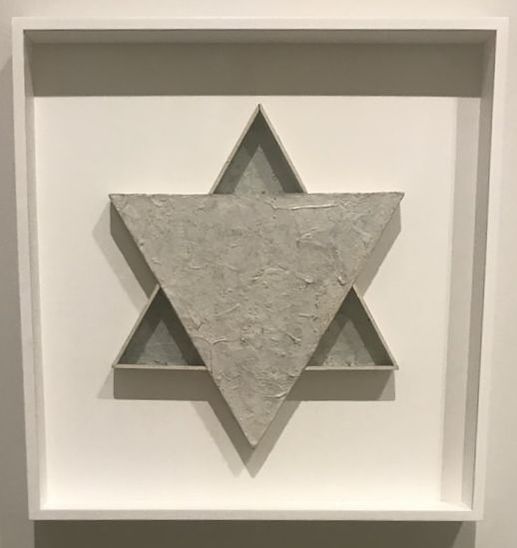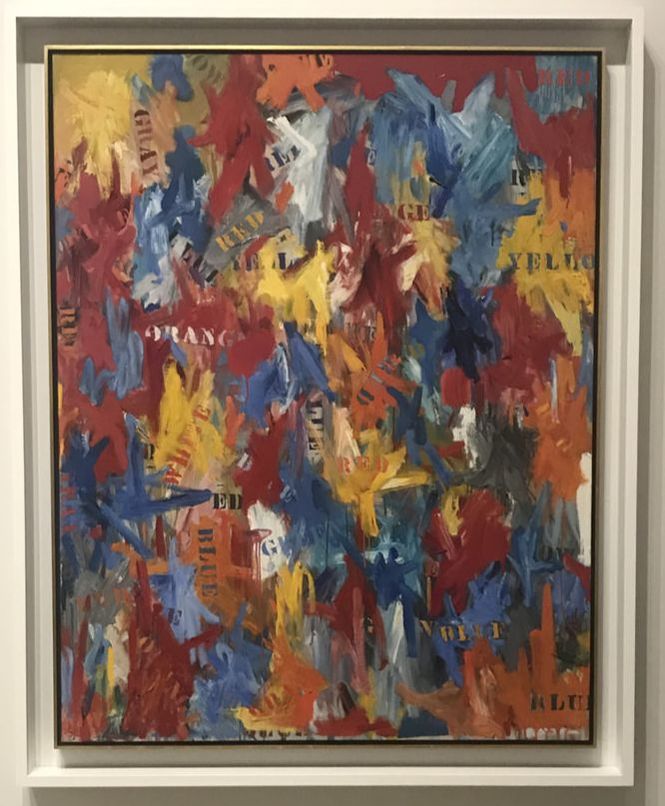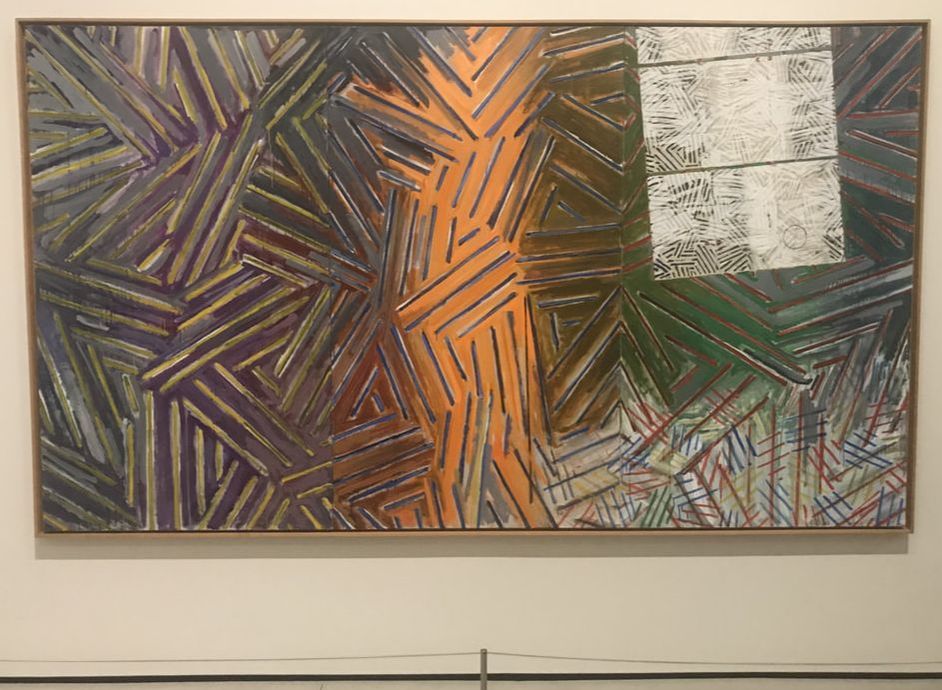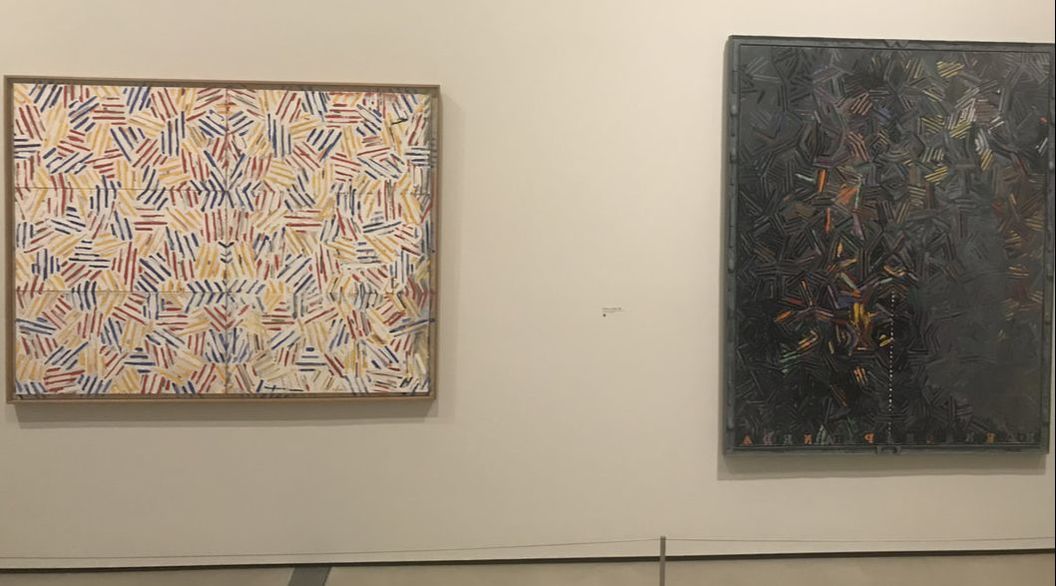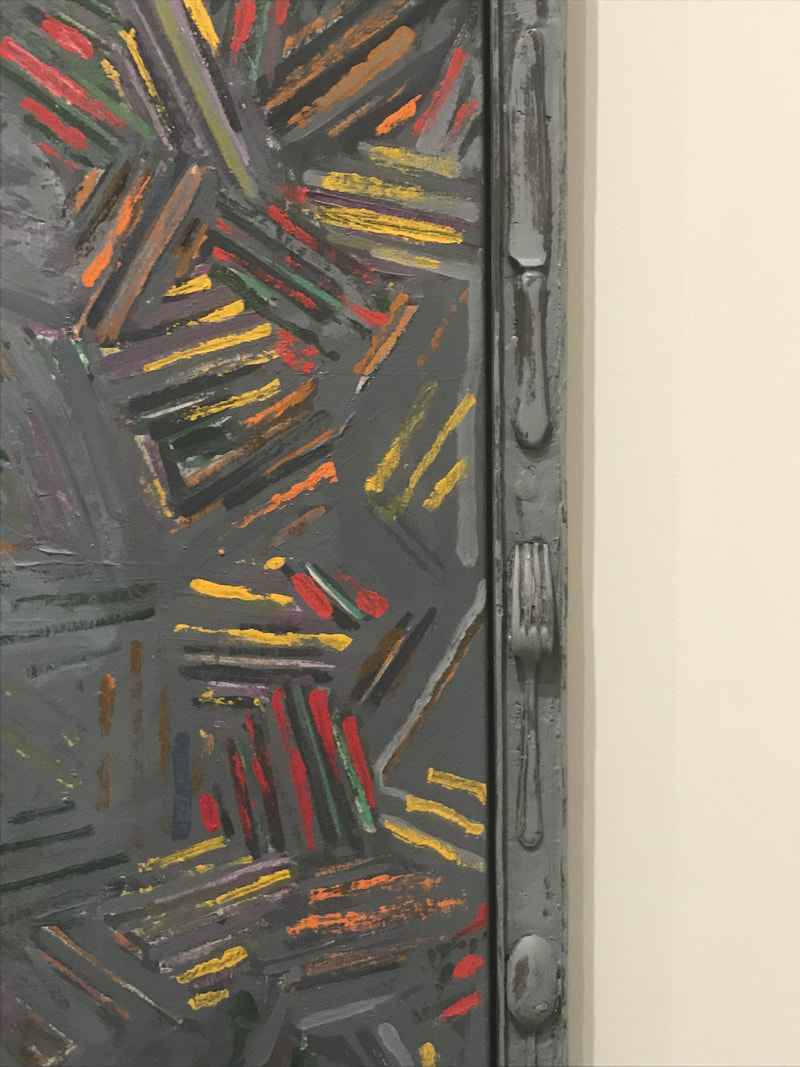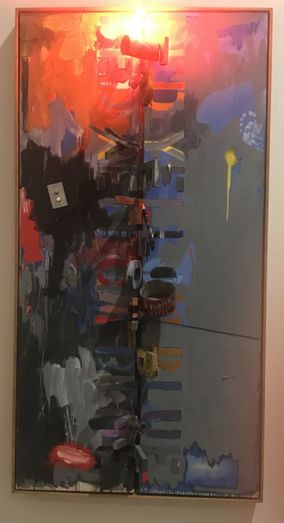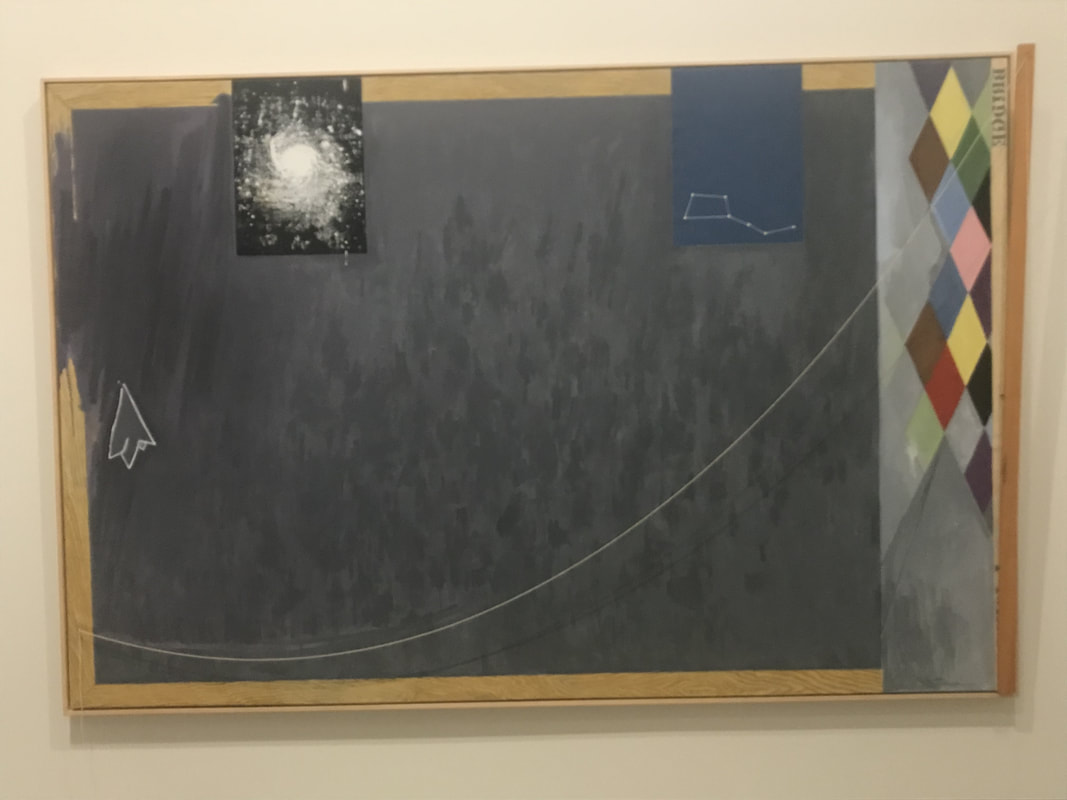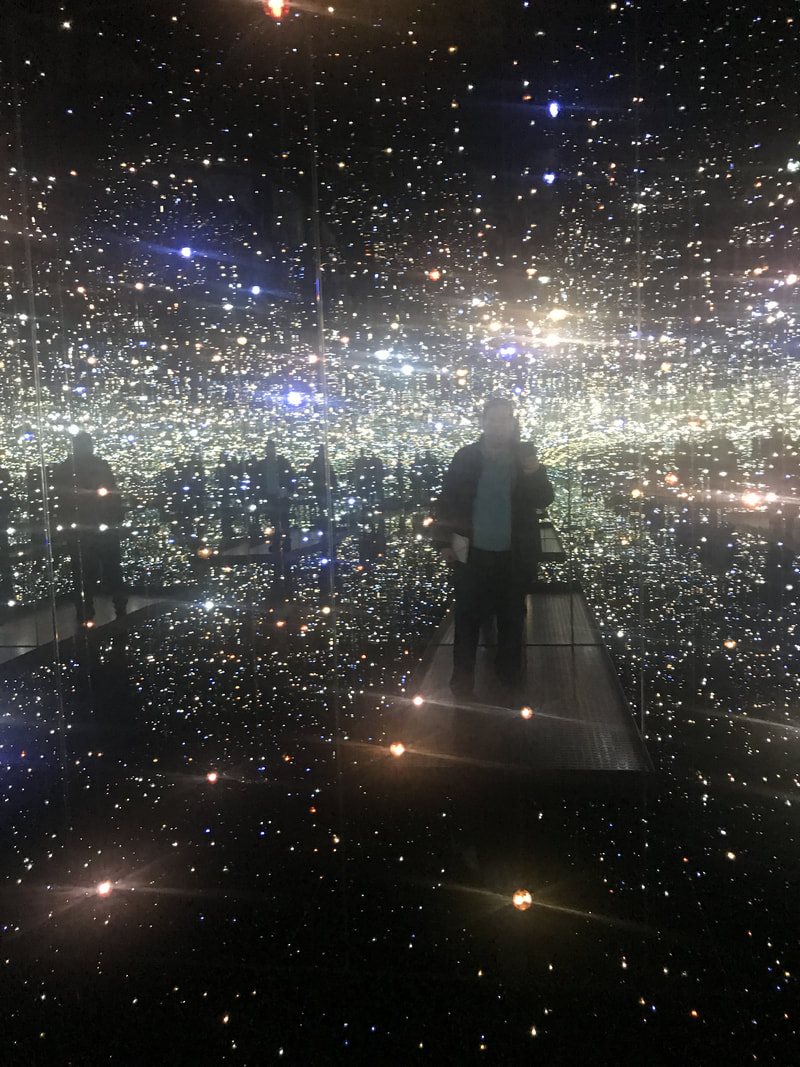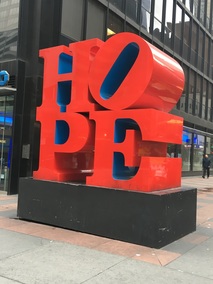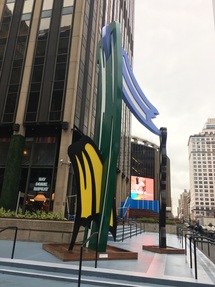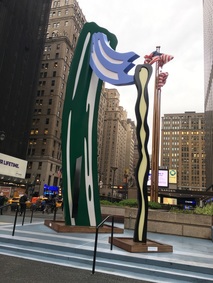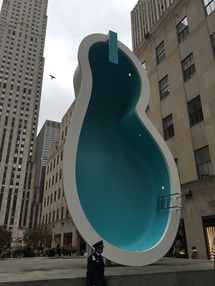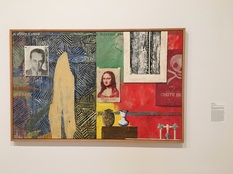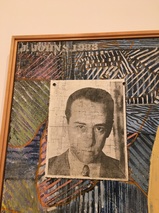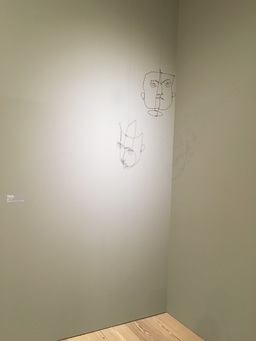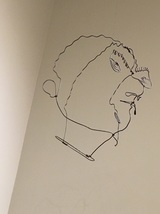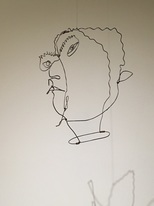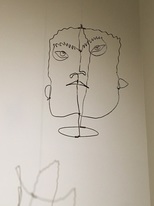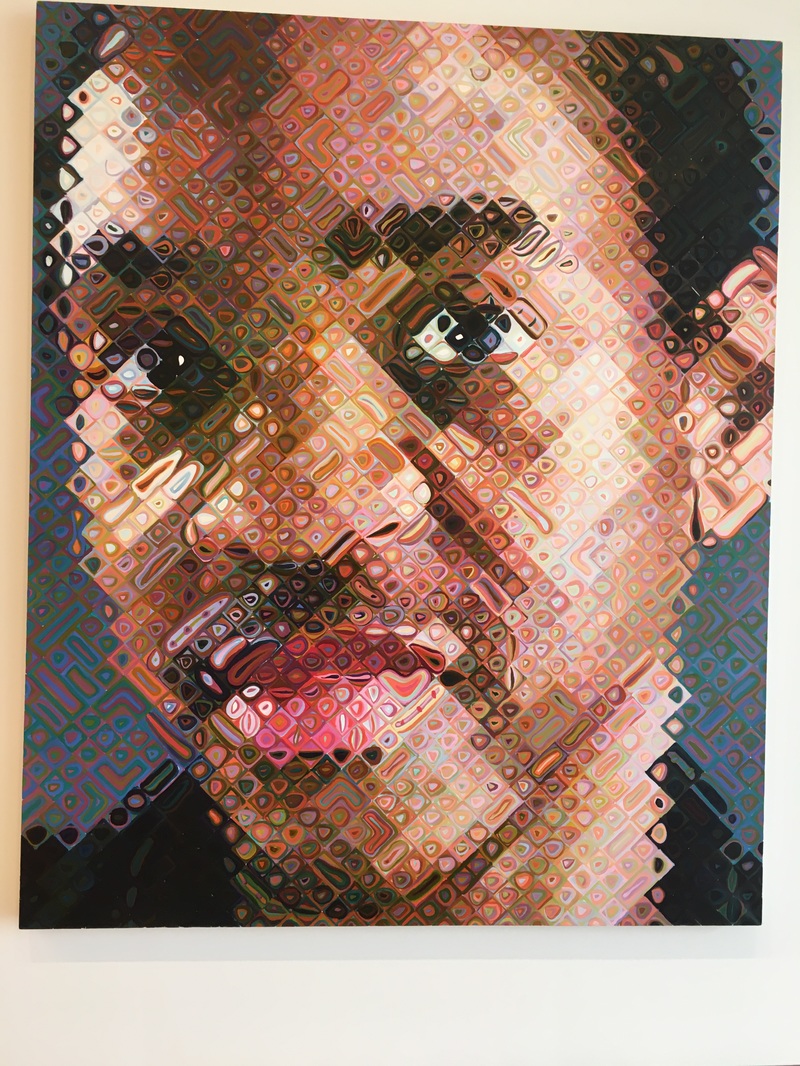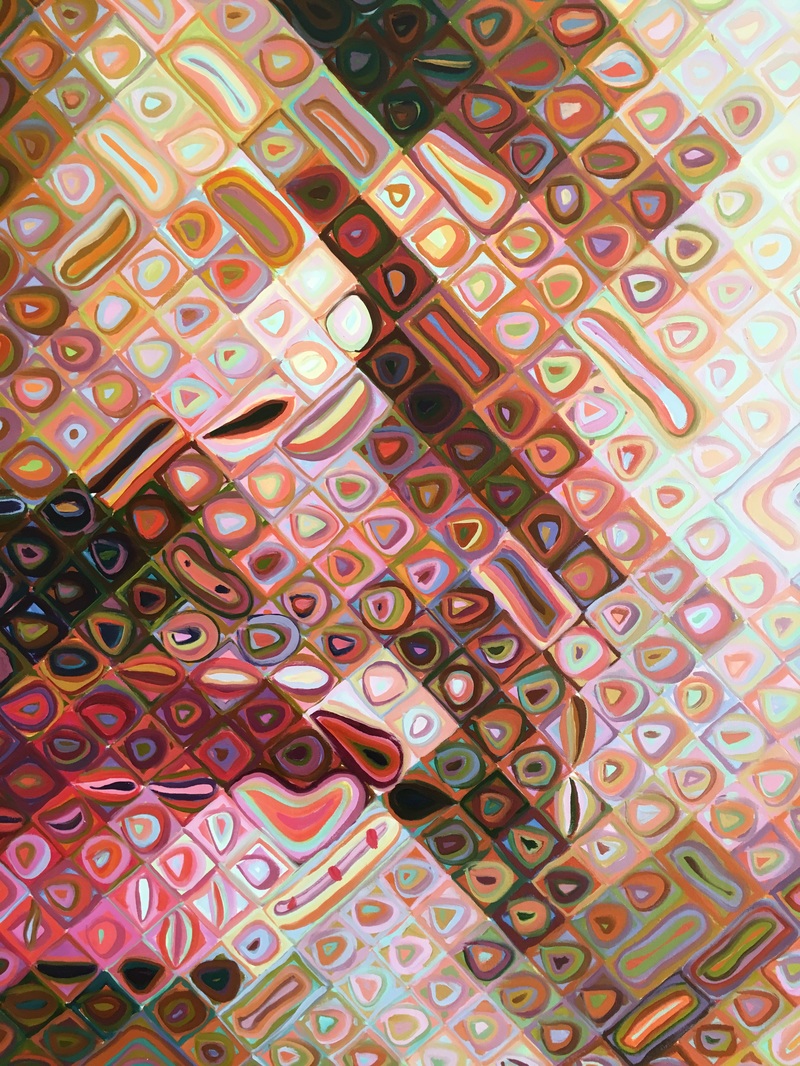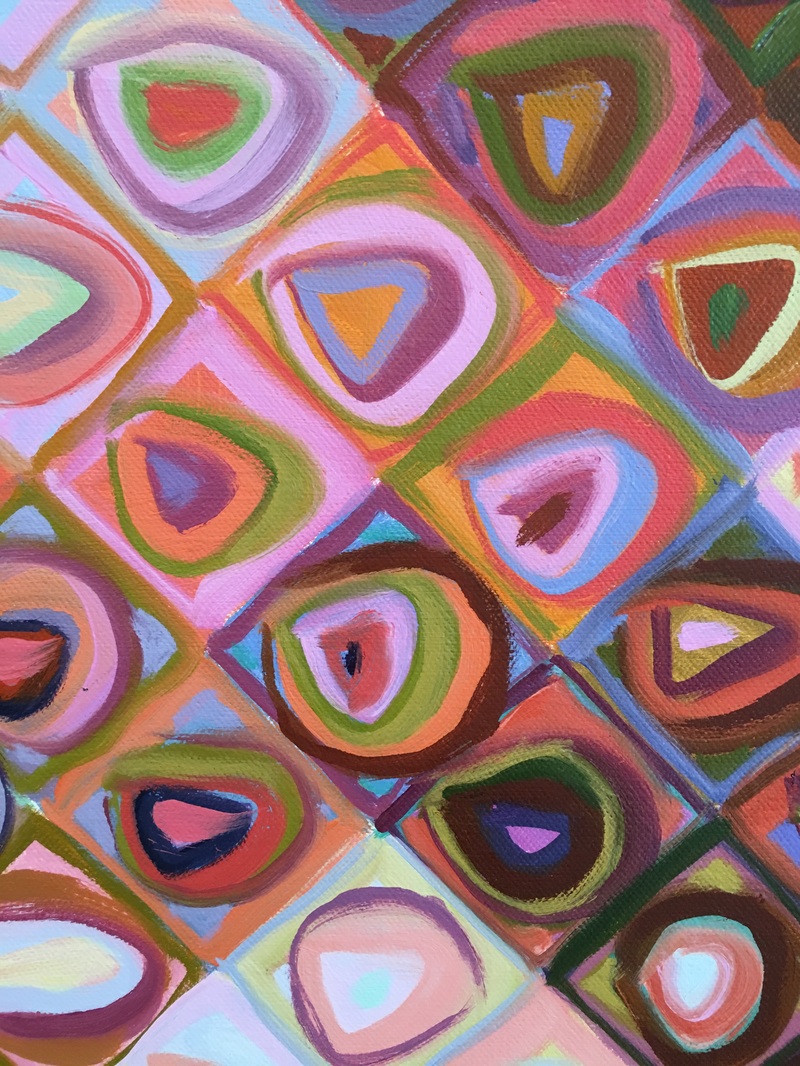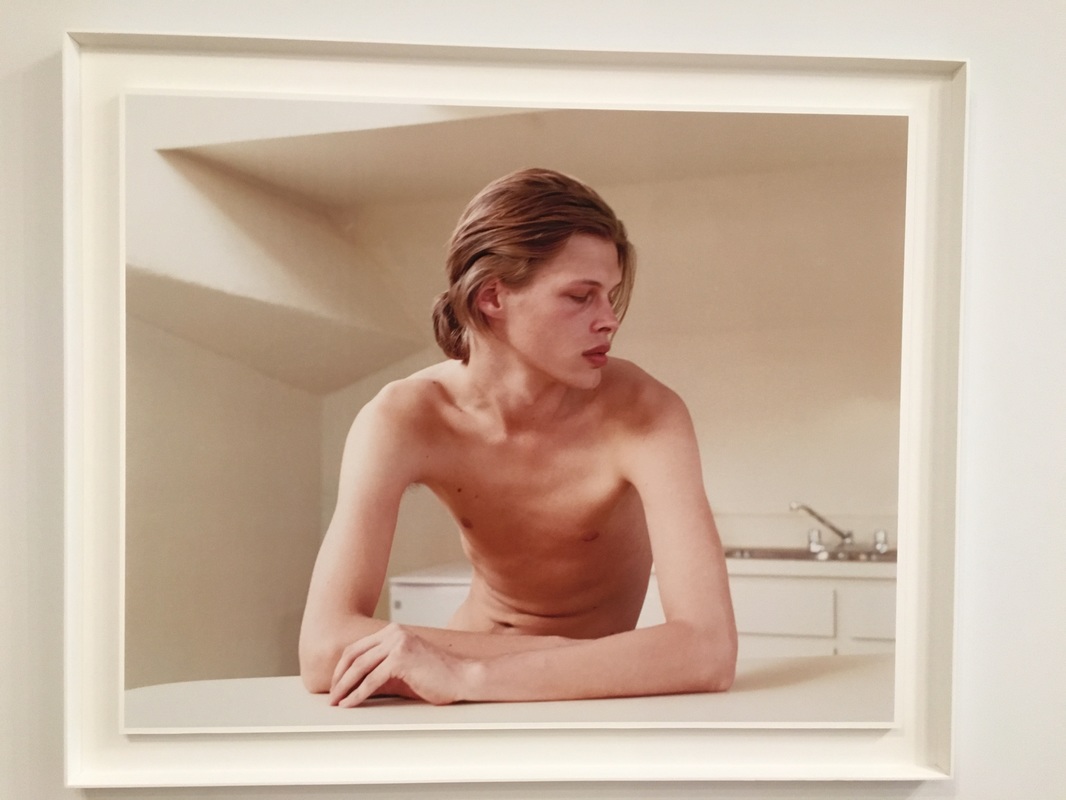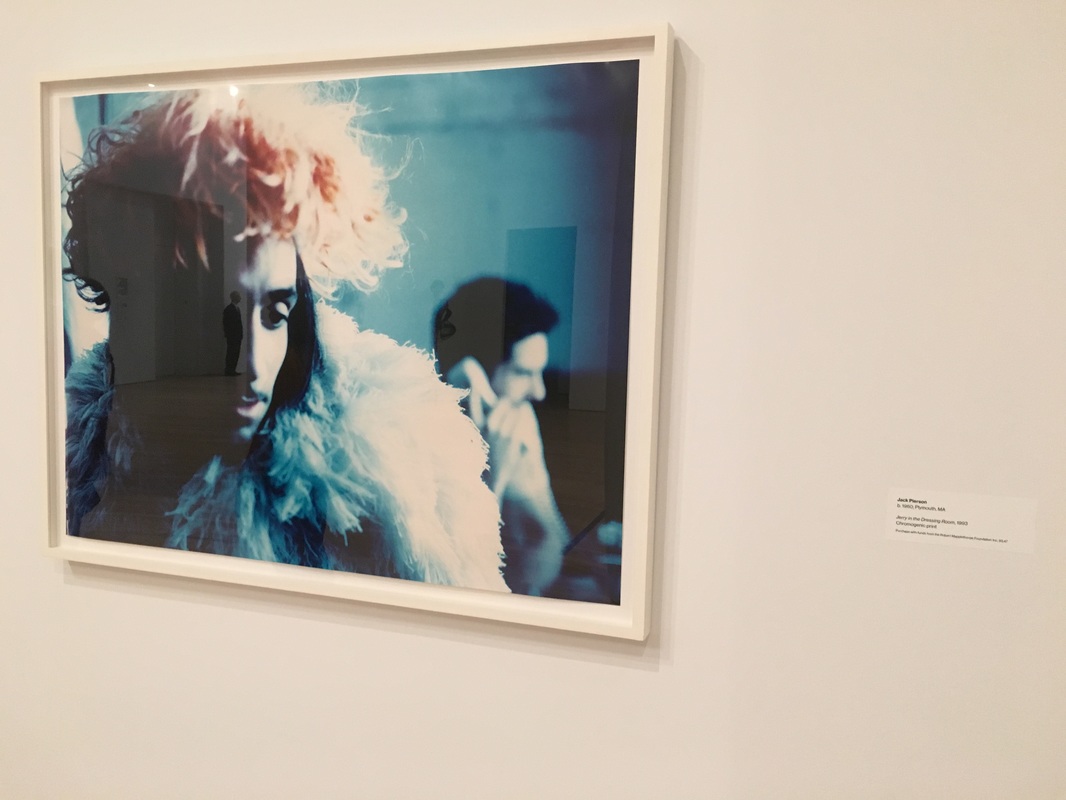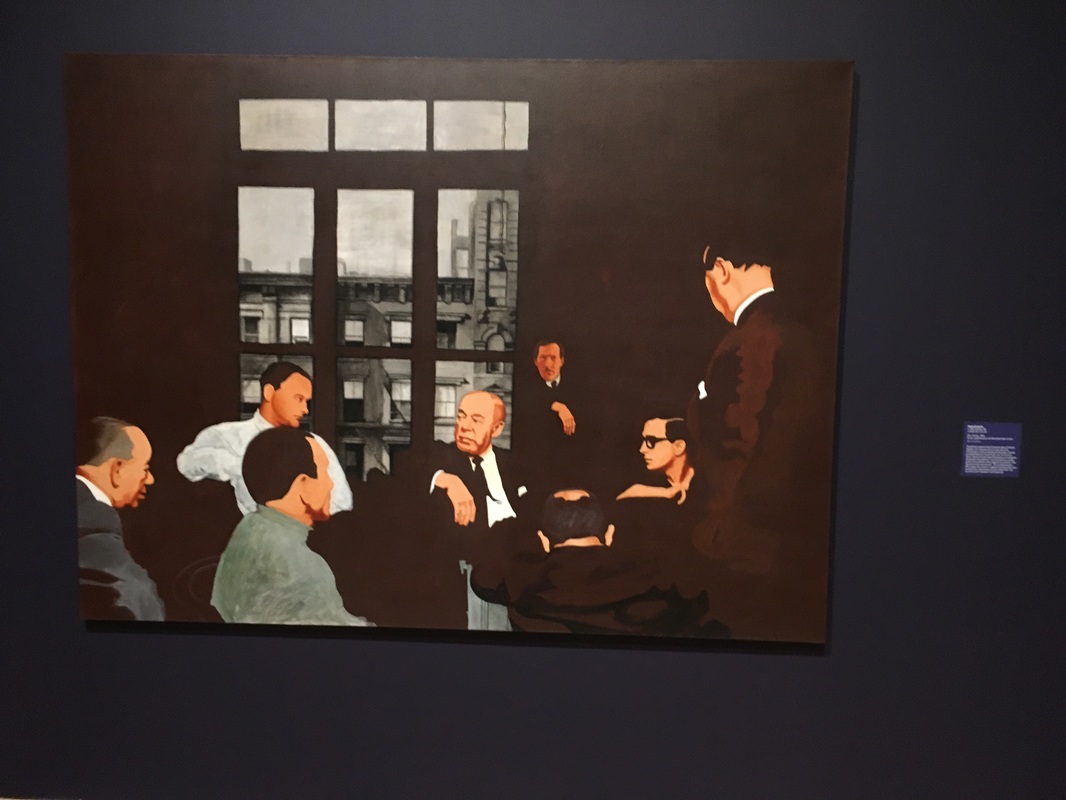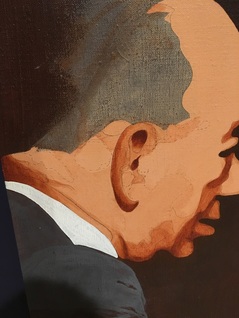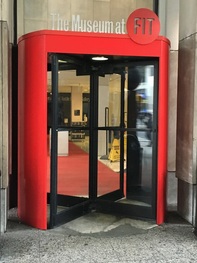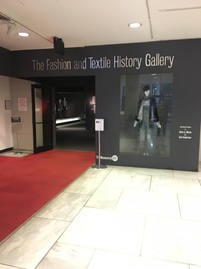The Museum of Contemporary Art is actually comprised of three locations. The first is the MOCA Pacific Design Center in West Hollywood; the second is the MOCA on Grand Avenue; and the newest location is the Geffen Contemporary. There is actually a fourth location in Nevada. Yes! Nevada. The artist, Michael Heizer's artwork titled, "Double Negative" is a work of land art located in the Moapa Valley on Mormon Mesa near Overton, Nevada and was acquired into MOCA's permanent collection in 1985. If the artist's name rings a bell, it's because I recently wrote about his other monumental piece of artwork at the Los Angeles County Museum of Art; CLICK HERE TO READ THE BLOG ARTICLE. I should note that time didn't permit me to visit the Pacific Design Center, or the Geffen Contemporary (or visit Nevada), so this post will only include my visit to the MOCA on Grand Avenue. I also visited the Broad Museum (Read On & See Below.) The Geffen Contemporary is just a 15-20 minute walk from MOCA Grand and admission to one museum grants you admission to the other museum.
The MOCA on Grand Avenue housed an entire gallery room with Mark Rothko paintings. While I can appreciate Rothko's artwork and acknowledge its importance in art history, his paintings are not my favorite. I do love all the colors, and I also love the shapes, however, there is ambiguity, blurring of lines, that doesn't hit me the right way. Rothko wanted viewers to stand close to his paintings to see the vertically stacked bands of color seem to float upon colored grounds.
This large painting on two panels is by the artist, Njideka Akunyili Crosby. It's called "Garden, Thriving" and was completed in 2016. Her artwork was quite fascinating to see in person and I've included a detailed photograph of the two-panel painting. Originally from Nigeria, the artist layers photographic imagery within the chairs' fabric and the plant leaves. The images are pictures of Nigerian pop stars, models, military dictators, celebrities, and the artist's own personal photographs. To create this artwork, she uses acrylic paint, transfers, colored pencils, and collage on paper. There is so much to see in this painting, you could look at it for 10-20 minutes, or longer! I should also mention that the mural that is wrapped around the exterior of the museum is by this same artist!
Three other works by Jackson Pollock from MOCA’s permanent collection, were also on view. These were great examples of the diversity and range of materials Pollock used in his artwork from watercolor to collage. Walt Disney Concert Hall, Los Angeles, California This building is simply spectacular. Frank Ghery is one of my favorite architects and this is a perfect example of why that's the case. (In addition to all the awards he has won for his incredible architectural design). Frank Gehry was asked to devise a new home for the Los Angeles Philharmonic and the Walt Disney Concert Hall opened in 2003. Reflecting Gehry’s longtime passion for sailing, the structure’s exterior features are expanses of stainless steel that hover above Grand Avenue. Frank Gehry has devoted his career to disrupt the very meaning of design within architecture. From the iconic Guggenheim Museum Bilbao to the Fondation Louis Vuitton in Paris, and now the Walt Disney Concert Hall in Los Angeles, Frank Gehry has proven time and again the beautiful magic of his whimsical, cutting-edge design.
The Broad is one of the finest contemporary art museums I have ever visited. Founded by philanthropists Eli and Edythe Broad, the museum houses more than 2,000 works of art and holds one of the most prominent collections of postwar and contemporary art worldwide. The Broad's third floor galleries show a rotating selection of artwork and, best of all, it is free! The first floor galleries are for special exhibitions, like the Jasper Johns exhibit "Something Resembling Truth" that runs through May 13, 2018. So let's talk about the beautifully designed building... It's often called "The Veil and the Vault" because the building has gallery space as well as an extensive storage facility. In contrast with the neighboring Walt Disney Concert Hall, The Broad was designed to be porous and absorptive. There are wonderful olive trees that were planted in the plaza next to the museum. There were a number of artworks by Jeff Koons at The Broad. "Balloon Dog (Blue)" is perhaps one of his series of works that is most famous. The artwork is made of stainless steel and wights 2,000 pounds. It was created as part of his Celebration Series, a group of paintings and sculptures that memorialize rituals, icons, and images related to birthdays, holidays, and other celebratory parties or occasions.
Roy Lichtenstein is one of my all-time favorite pop artists. He was one of the founders of Pop Art in the 1960s and used tiny dots in his artwork, similar to the printing style of comic-books. The dots were placed in such a way to create an image, imitating the way comic-books and newspapers were printed. In addition to borrowing or seeking inspiration from newspaper ads, commercials, and comic books, Roy Lichtenstein also was inspired by some of his favorite artists like Picasso and Mondrian. See the two images below. Here is a sculpture by Roy Lichtenstein, "Goldfish Bowl" created in 1977. It is painted and patinated bronze. On the right is a detailed view, showing that the sculpture is very two-dimensional, despite it looking 3-D. I always love seeing paintings by Chuck Close. Chuck Close is known for his detailed paintings of faces, and later he was known for the deconstruction of that detailed portraiture. He explores portraiture and created this photo-realist painting called "John", painted in 1971-72. I included a detailed shot showing the incredible painting technique. John Baldessari, "Tips for Artists Who Want to Sell" 1966-68, Acrylic on Canvas. John Baldessari never touched this painting, didn't paint it, didn't write the text. Here, it's the role of the artist as the facilitator of the artwork; creating the concept. The humor is that the view is shown the paintings message, but the message is text taken from an art magazine with tips on what art should be. Another one of my all-time favorite artists is Andy Warhol. A short time after Marilyn Monroe died in 1962, Andy Warhol started to create silkscreen images of Marilyn. I learned that Warhol had recently just learned how to silkscreen, so this was a somewhat new process for him! In the painting above, titled, "Two Marilyns" created in 1962, Warhol captures the terrible fact of Marilyn's death, as if he was reporting the news. With silkscreens, the images deteriorate with each printing, which I believe is symbolic of her presence and then her fading into history with her death. It can also be interpreted as the volatility of fame and celebrity. I'm not sure how many versions of "Two Marilyns" were created, but I learned that the one pictured above from The Broad Museum was the 27th version of the silkscreen created. Ellsworth Kelly worked with shapes and solid colors. The painting below, "Green Blue Red" created in 1963, uses colors and shapes to create contrast and bring attention to edges. In the above image on the left, the green rectangle and blue oval are vibrantly displayed against the red background. His composition almost goes against the principal of design of balance. Below, Kelly's oil on canvas painting, "Green Relief with Blue" was completed in 2011. It's actually two conjoined canvases and I've posted the photo of the same painting as seen from different angles. It almost acts like a 2 dimensional painting trying to be a sculpture, with different views from different angles. Jasper Johns: "Something Resembling Truth" A Special Exhibition at The Broad (Through May 13, 2018) While The Broad Museum's main collection has free admission, this special exhibition required a special ticket with a timed entry. The exhibit was one of the best I've ever seen. The exhibit covered over 6 decades of artistic achievement from this iconic American artist. The comprehensive exhibit features more than 120 extraordinary paintings, drawings, prints, and sculptures, by Jasper Johns and draws upon works from within The Broad's permanent collection as well as from loans from over 50 international public and private sources. The imagery he used in his artwork were common items such as American flags, numbers, letters, targets, and light bulbs. Perhaps Johns’ most famous painting, "Flag (1954–55)" and is a fairly accurate representation of the American flag, in encaustic on collaged paper and fabric.
The American Flad is a geometric composition that has a strong sentimental and patriotic value in society. Jasper Johns' flags ofent trick the eye, or blur the lines between perception, reality, and illusion.
Jasper Johns began to incorporate objects and tools used in his artwork directly into the artwork's creation. Things like paintbrushes, color charts, and rulers. In the painting below, the "R" of "Red" is a neon light and wooden letters protrude outward from the canvas. I highly recommend you to experience the Jasper John Exhibit if you can! Also on the first floor was a very unique art installation by artist, Yayoi Kusama, titled "Infinity Mirrored Room--The Souls of Millions of Light Years Away." It is a mirror-lined room that includes LED lights that reflect endlessly in the mirrored space. It doesn't sound like much, but it is quite amazing to see. You need a separate timed ticket, which is free, and only one person can enter the room at a time for a duration of 45 seconds. As you can see, the Broad Museum is quite an amazing experience. I highly recommend you visit The Broad in Los Angeles and experience the art scene in Downtown LA. For more information about The Broad, please visit their website: www.thebroad.org Check out some of my other posts about Los Angeles!
0 Comments
I recently returned from a quick 2-day trip to New York City. The first day was primarily focused on a new movie I am working on (currently looking for investors for the film) called “Dan & Carla.” We had a spectacular table reading of the script with the actors along with a number of friends and interested parties of the film. After the reading, I had the pleasure of meeting and speaking with Jack Pierson, a longtime family friend of the film’s director. Jack Pierson is an incredible artist who works with a variety of different mediums, including sculpture, photography, video, and is best known for his word signage installations. His artwork is in the permanent collections of the Whitney Museum of American Art, the Metropolitan Museum of Art, the Guggenheim Museum, just to name a few. (See below for more about his two incredible pieces that were on view at the Whitney Museum.) Here’s some information about the film for those interested: It is a modern-day romantic comedy about two young NYC lovebirds who try to salvage their troubled relationship: Dan & Carla, two lovers from opposite sides of the subway tracks, are forced to confront the issues of romance, commitment, betrayal and sexual (dis)orientation.” For more information: www.Facebook.com/danandcarlathemovie http://www.imdb.com/title/tt4324704/?ref_=fn_al_tt_1 There is SO MUCH ART in New York City! There were three pieces of public art that I had the pleasure of seeing on this trip. Here is a photo of Robert Indiana’s HOPE Sculpture located on the corner of 7th Avenue and 53rd Street. A couple months ago, I wrote in my blog about Robert Indian’s LOVE Sculpture in Scottsdale, Arizona. This HOPE Sculpture is also only a few short blocks away from the LOVE Sculpture in New York City 55th and Avenue of the Americas/6th Ave. I’ve learned that each year on the artist’s birthday, September 13, Robert Indiana HOPE sculptures will be installed and displayed in locations throughout the world. The HOPE sculptures celebrate the message of hope and fulfill the artist’s vision of a more promising future for us all. Another public sculpture, located just outside of Penn Station and Madison Square Garden (7th Avenue and 33rd St.) is Roy Lichtenstein’s “Brushstroke Group.” And the last public art sculpture that I got to see was Elmgreen & Dragset’s “Van Gogh’s Ear” located in Rockefeller Center. It’s basically a huge swimming pool stood upright. I really liked how misplaced it looked, especially in such a dense area, with a huge amount of foot-traffic, in contrast to a large swimming pool, typically seen in a less congested area. This is a temporary installation, so be sure to see it before June 3rd! I started the second day of my trip at the Whitney Museum of American Art. The new Whitney’s architecture is spectacular inside and out. And the artwork within the walls of the Whitney is very special. On the Sixth and Seventh Floors of the museum, I experienced the exhibit, "Human Interest: Portraits from the Whitney's Collection." It made me rethink my own internal definition of the word "Portrait." The exhibit demonstrated the way portraiture has changed from the early 1900s to present day. When you think about it, the whole concept of portraiture has changed over time. The painting of portraits was once reserved for the elite, and those who could afford such a luxury, yet with the rise of photography, everything has changed. With the iPhone and other smartphones and with the influence of social media, the "selfie" is almost a new form of portraiture. Whatever the form, portraits get to the very essence of who we are as people and our place in the world.
Chuck Close, is very well known for his huge, floor to ceiling, portraits best viewed first from afar, and then up close (excuse the pun). This is his work titled "Lyle" and I've included a few views for you to see the genius behind his artwork. And Jack Pierson, who I had the pleasure of meeting the night before, had two of his many works that are part of the Whitney's permanent collection, on display. One a self-portrait, "Self Portrait #4", 2003, and the other called, "Jerry in the Dressing Room", 1993. I also saw some impressive works of art from some artists that I haven't been exposed to before. The painting shown here is one from the artist, Howard Kanovitz, called "New Yorkers 1". It's a very large painting and I found it to be very striking. I especially liked seeing the use of pencil within the painting as shown in this close-up photo. There is a beautiful outdoor space with stairs leading to other levels and views of the surrounding cityscape and the new, NYC treasure, the High Line. If you plan to visit the Whitney Museum, you could also walk on the High Line either before or after what is sure to be an incredible art experience at the Whitney! After the Whitney, I visited the Chelsea Market where I stumbled across a wonderful ID Pop Shop that featured apparel, accessories, Jewelry, and art. www.Idpopshop.com I then proceeded on my quest to visit some of the Chelsea galleries that feature modern and contemporary art. Some galleries were focused on established artists and artists who are well-known to the general populace and others showcased emerging artists. I walked my feet off and ended up visiting about two dozen difference art galleries in Chelsea. I'll share some of my favorites here: One of the galleries that I really enjoyed visiting in Chelsea was Jim Kempner Fine Art. http://jimkempnerfineart.com/ It was at this gallery that I was introduced to an artist named Greg Parker. His artwork features a unique process that results in an unbelievably cool work of art. He starts with a wood panel that is covered with up to 20 layers of polished gesso, thin layers of powdered pigment and graphite that is applied in progressive steps within mathematical systems. Kind of looks like metal or wood but the end result is a subdued reflective surface that is solid at nature. At the Bryce Wolkowitz gallery, http://brycewolkowitz.com located at 505 W. 24th St., I saw a truly unique exhibit of multimedia sculptures and video installations from the artist, Yorgo Alexopoulos, I have learned that he films the 4K video, makes use of a translucent LCD video screens, robots, 3-D printers, motorized dollies, and multiple cameras simultaneously shooting time lapse photography. The piece that I found most compelling was one titled "First Time On The Moon,” which is comprised of the digital animation on a high definition translucent LCD display, aluminum and patina steel, glass, and custom electronics. The subject matter is the moon with the earth hovering in the distance in space. The Berry Campbell Gallery www.berrycampbell.com presented the work of the artist Stanley Boxer, a Massachusetts born artist known for his thickly painted abstract works of art. I visited the new Lisson Gallery at 504 W. 24th St. lissongallery.com It was a brand-new exhibit that opened just this past week, featuring the artwork of Carmen Herrera. I learned that she has been painting for almost 80 years in her Manhattan studio. She's perhaps the oldest living artist I've seen on my venture; she will celebrate her 101st birthday later this month and will be honored with a survey exhibition at the Whitney Museum of American Art in September 2016. The exhibit at the Lisson Gallery represents a new body of work produced in the last two years. The paintings exhibited were primarily acrylic on large-scale canvases. They almost had an Ellsworth Kelly kind of feel to them, in terms of the colors used in a very minimalist way. At 138 10th Ave., I visited Lori Bookstein Fine Art. www.loribooksteinfineart.com There were a few artists represented in this gallery exhibit, but one stuck out to me, an artist named Diana Horowitz. The exhibition featured a series of small paintings depicting the landscape of and around Lake Como, Italy. She painted on en plain air and each of the small 5" x 7" or smaller canvases had subdued tones and colors capturing the light across the landscapes. One of the most unusual, yet fascinating exhibits that I saw was at the Lions Wier Gallery at 542 W. 24th St. www.lyonswiergallery.com The gallery featured the pop artist, Jae Yong Kim in the exhibit titled "Pop Goes The Donut". The walls of the gallery were lined with ceramic, glazed donuts, many featuring Swarovski crystals, gold, and other mixed media. At the Cheim & Read Gallery, a brand new exhibit features the work of Spanish artist, Juan Uslé. Jack Pierson has shown his work at this gallery in the past. Many of the works were in excess of 9 feet in height. I learned that the short, broad brushstrokes comprising the bands in his paintings are based on the artist's pulse, similar to a cardiogram. www.cheimread.com The Agora Gallery at 530 W. 25th St. focuses on emerging artists, and I recommend checking this gallery out for emerging talent! www.Agora-Gallery.com The Rush Arts Gallery (Rush Philanthropic Foundation www.rushphilanthropic.org) at 520 W. 26th St. featured an exhibit called “Medium: Black.” The Rush Philanthropic Foundation is a non-profit founded in 1995 by media mogul Russell Simmons and his brothers and is committed to bettering the lives of under-served city youth through exposure to the arts and to provide professional support for emerging artists and curators. The group show featured artists that all use the color black. One of the pieces of artwork that I found most fascinating in this gallery was the work of Charlotte Becket who used a motor within the artwork, giving the artwork almost an organic or living feeling to it. The Tagliatella Galleries featured some originals and prints from some of the more well-known contemporary artists like Alex Katz, Andy Warhol, Roy Lichtenstein, Mr. Brainwash, Bansky, Kaws, Damian Hirst, Keith Haring, Jeff Koons, etc. http://www.taglialatellagalleries.com/ Another well-known and established gallery, The Pace Gallery, featured David Hockney prints entitled, “The Yosemite Suite”. http://www.pacegallery.com/ The Robert Miller Gallery on 26th St featured the work of Lee Krasner. http://www.robertmillergallery.com/ And the Mitchell-Innes and Nash Gallery featured the incredible work of Tom Wesselmann. http://www.miandn.com/ Before heading back to Boston, my final stop was the Fashion Institute of Technology where I was able to see a wonderful exhibit on the history of denim. When you think about fashion, denim is one of the many materials out there that really stands out and has lasted for hundreds of years. Denim may even be the most popular fabric in the world today. The exhibit entitled: “Denim: Fashion’s Frontier” showed the evolution of denim. The exhibit takes you from the very earliest use of denim all the way to present day, highlighting the milestones denim has had impacting the fashion world. In its last days, this exhibit will be followed by an exhibit on May 20th, entitled “Uniformity,” which will explore the history behind a variety of uniforms (military, work, school, and sports), considering both their social role and their influence on high fashion. The Museum at FIT is located at 7th Avenue at 27th St. http://www.fitnyc.edu/museum/ I hope you enjoyed reading this blog and my reflections on the art I've seen. Please check out the websites of these galleries for more information and for current exhibition dates! PS: If you liked this article, you might like these other articles on my artistic travels:
Kennebunkport, Maine Los Angeles, California New York City New York City Street Art Napa Valley, California Park City, Utah Barcelona, Spain Caribbean Art |
The Art ConnectionWelcome to Eddie Bruckner's Art Blog! Archives
April 2022
Categories
All
|
